Semiconductor Devices in Solid-State/Hybrid Circuit Breakers: Current Status and Future Trends
Abstract
:1. Introduction
- (i)
- “Fully controllable”: The conducting and breaking of CBs should be fully controllable either by automatic mechanical tripping or digital controls;
- (ii)
- “Higher switching speed”: CBs should break the fault current as soon as they could to avoid huge fault current destroying end equipment;
- (iii)
- “Low conduction loss”: CBs should maintain the same scale of conduction loss as previous MCBs, therefore the efficiency for normal operation must be appropriate;
- (iv)
- “Smaller arcing”: For both DC and AC applications, electric arcing should be avoided or suppressed to retain long lifetime of the CB itself, and at the same time, ensure definitized tripping of the CB system.
2. Review of Solid-State/Hybrid Circuit Breakers
2.1. Fast-Breaking Mechanical Devices
2.2. Basic Solid-State/Hybrid Circuit Breakers
2.3. CL-CBs with Switched Resistive Components
2.3.1. CL-CBs with Ordinary Resistors
2.3.2. CL-CBs with Positive Temperature Coefficient Thermistors
2.3.3. CL-CBs with Superconductors
2.4. CL-CBs with Other Switched Components
2.4.1. CL-CBs with Inductive Components
2.4.2. CL-CBs with Inductor-Capacitor (L-C) Components
2.5. Controllable Semicondcutor Devices for Current-Limiting
2.5.1. CL-CB with Semiconductor Power Switches
2.5.2. Active Bridge Configurations of CL-CBs
2.6. Summary
- (a)
- Mechanical switches, as one half of the HCB configuration, need more investigation about lifting the tripping speed;
- (b)
- HCBs with auxiliary semiconductor switches will be widely used for HVDC systems because of their natural superiority: no-arcing, acceptable switching speed, and low transmission power loss;
- (c)
- Superconductor-based circuit breakers are quite expensive and have huge size/weight, so they may be only used in HVDC systems because of their insensitivity of floor space. Further investigation could be on implementation and higher-temperature superconductors;
- (d)
- As current-limiting is becoming more intelligent, semiconductor devices will be widely applied, but their reliability must be taken into account;
- (e)
- Resistive CL-CB has really high power dissipation, it might be only used for short-term limiting;
- (f)
- Inductive CL-CB and L-C based CL-CB are sensitive to frequency changes, so the robustness is not perfect. The dynamic response must be analyzed before any conduction;
- (g)
- Bridge-connected CL-CB has the best flexibility and controllability, but may suffer from higher power loss and the need for other additional components. Active CL-CB with SSSC may be a good solution for DC/AC systems for its controllable reactive power generation capability and its multi-function of short-circuit protection;
- (h)
- Wide-band-gap (WBG) devices e.g., SiC MOSFET are recommended for fast breaking as well as current limiting, but the overall cost should be taken into consideration.
3. Novel Circuit Breaker Concepts with Different Power Devices
3.1. Basic HCB/SSCB Configuration in Low-Voltage AC/DC Grids
3.1.1. Fast Breaking of SSCB or HCB with WBG Devices
- (a)
- FMS carries the main current with low conduction loss;
- (b)
- SMS is to cut off fault current with a higher speed;
- (c)
- MOV absorbs the remaining energy of line inductance to avoid over voltage across SMS;
- (d)
- A mechanical disconnector is needed to ensure electrical insulation while all turned off.
3.1.2. Current Limitation Method with PWM Strategy
3.1.3. Current Limitation by Gate Voltage Control
3.1.4. A Novel Current-Limiting Method for Basic HCB in Low-Voltage AC Grids
3.1.5. Limitation of Basic SSCB/HCB Configurations
- (a)
- The switching speed of a basic HCB depends on the tripping performance of FMS, which limits the switching speed of HCBs to several milliseconds;
- (b)
- The power loss of basic SSCBs is high and not acceptable in many cases, therefore they are not suitable in many applications;
- (c)
- Current limiting by PWM introduces high power losses on MOV components and current limiting by gate voltage control introduces high power loss on semiconductor power devices, therefore the application area is limited;
- (d)
- Current limiting by phase shifting could only be used in AC systems and with large current harmonics;
- (e)
- Although SiC devices may confer an advantage to basic SSCB/HCB configurations with fast breaking (higher switching speed), PWM current limiting (higher switching speed and junction temperature), linear gate voltage control current limiting (higher junction temperature), the cost of SiC MOSFETs is still much higher than that of Si IGBTs, which bounds the spread of SiC MOSFETs in circuit breaker applications.
3.2. Novel CB Configurations with Different Semiconductor Devices
3.2.1. Configuration 1: HCB with Capacitor
3.2.2. Configuration 2: HCB with STS and Capacitor
3.2.3. Configuration 3: Pure SSCB with Thyristor and STS (A Better Solution)
3.2.4. Comparisons of These Configurations
3.3. Summary of Semiconductor Devices in CB Applications
4. Future Trends and Challenges for Semiconductor Devices in CB
4.1. HCB for HVDC or MVDC: Very High Power
4.2. SSCB for Medium Power: Very High Speed
4.3. SSCB for Low Voltage: Ultra High Speed Switching or Multi-Functional
- (a)
- Ultra-high-speed switching with SiC devices or GaN devices;
- (b)
- Current-limitation capability with WBG devices with higher junction temperature;
- (c)
- Integration of multi-functional operation for intelligent solid-state circuit breakers.
5. Conclusions
Author Contributions
Conflicts of Interest
Abbreviations
| ABB | ASEA Brown Boveri Limited Company |
| AC | Alternating current |
| BJT | Bipolar Junction Transistor |
| CB | Circuit breaker |
| CL | Current-limiting |
| CL-CB | Current-limiting circuit breaker |
| DC | Direct current |
| EPRI | Electric Power Research Institute |
| FCLID | Fault-current limiting and interrupting device |
| FDS | Fast-opening disconnecting switch |
| FMS | Fast mechanical switch |
| FTS | Fast-opening transfer switch |
| GaN | Gallium nitride |
| GTO | Gate turn-off thyristor |
| HCB | Hybrid circuit breaker |
| HCLID | Hybrid current-limiting interrupting device |
| HEMT | High-electron-mobility transistor |
| HSS | High speed switch |
| HVDC | High-voltage direct-current |
| IGBT | Insulated-gate bipolar transistor |
| IGCT | Integrated gate-commutated thyristor |
| JFET | Junction gate field-effect transistor |
| L-C | Inductor-capacitor |
| LCS | Line commutation switch |
| LS | Load switch |
| LV | Low voltage |
| MCB | Mechanical circuit breaker |
| MCCB | molded-case circuit breaker |
| MCT | MOS-controlled thyristor |
| MD | Mechanical disconnector |
| MOS | Metal oxide semiconductor |
| MOSFET | Metal-oxide-semiconductor field-effect transistor |
| MOV | Metal oxide varistor |
| MV | Medium voltage |
| MVDC | Medium-voltage direct-current |
| PTC | Positive temperature coefficient |
| p.u. | Per-unit |
| PWM | Pulse-width modulation |
| RC | Resistor-capacitor |
| RCD | Resistor-capacitor-diode |
| RMS | Root mean square |
| SAS | Semiconductor accessary switch |
| SFCL | Superconductor fault current limiter |
| Si | Silicon |
| SiC | Silicon carbide |
| SMS | Semiconductor main switch |
| SPICE | Simulation Program with Integrated Circuit Emphasis |
| SSCB | Solid-state circuit breaker |
| SSFCL | Solid state fault current limiting |
| SSSC | Static synchronous series compensator |
| STATCOM | Static synchronous compensator |
| STS | Semiconductor transfer switch |
| THD | Total harmonic distortion |
| WBG | Wide-band-gap |
| ZCS | Zero current switching |
| ZnO | Zinc oxide |
References
- Carlson, M.S.; Edmunds, W.H. Co-ordination of current-limiting fuses and low-voltage air circuit breakers. Trans. Am. Inst. Electr. Eng. Part III Power Appar. Syst. 1956, 75, 1038–1048. [Google Scholar]
- Brice, C.W.; Dougal, R.A.; Hudgins, J.L. Review of technologies for current-limiting low-voltage circuit breakers. IEEE Trans. Ind. Appl. 1996, 32, 1005–1010. [Google Scholar] [CrossRef]
- Meyer, C.; Kowal, M.; De Doncker, R.W. Circuit breaker concepts for future high-power DC-applications. In Proceedings of the Conference Record of the 2005 IEEE Industry Applications Conference, Fourtieth IAS Annual Meeting, Hong Kong, China, 2–6 October 2005; Volume 2, pp. 860–866. [Google Scholar]
- Boudreaux, R.R.; Nelms, R.M. A comparison of MOSFETs, IGBTs, and MCTs for solid state circuit breakers. In Proceedings of the Eleventh Annual Applied Power Electronics Conference and Exposition (APEC ′96), San Jose, CA, USA, 3–7 March 1996; Volume 1, pp. 227–233. [Google Scholar]
- Meyer, C.; Schroder, S.; De Doncker, R.W. Solid-state circuit breakers and current limiters for medium-voltage systems having distributed power systems. IEEE Trans. Power Electron. 2004, 19, 1333–1340. [Google Scholar] [CrossRef]
- Smith, R.K.; Slade, P.G.; Sarkozi, M.; Stacey, E.J.; Bonk, J.J.; Mehta, H. Solid-state distribution current limiter and circuit breaker: Application requirements and control strategies. IEEE Trans. Power Deliv. 1993, 8, 1155–1164. [Google Scholar] [CrossRef]
- Atmadji, A.M.S.; Sloot, J.G.J. Hybrid switching: A review of current literature. In Proceedings of the International Conference on Energy Management and Power Delivery (EMPD ′98), Singapore, 3–5 March 1998; Volume 2, pp. 683–688. [Google Scholar]
- Paul, W.; Rhyner, J.; Platter, F. Superconducting fault current limiters based on high Tc superconductors. In Proceedings of the IEE Colloquium on Fault Current Limiters—A Look at Tomorrow, London, UK, 8 June 1995; pp. 1–4. [Google Scholar]
- Abri, A.; Nordgren, R.; Kjellnas, S.; Banghammar, L.; Lindgren, S. Finite element analysis of electromagnets and contact systems in low voltage current limiting circuit breakers. IEEE Trans. Magn. 1990, 26, 960–963. [Google Scholar] [CrossRef]
- Abri, A.; Kjellnas, S.; Nordgren, R.; Lindgren, S.; Banghammar, L.A. Mechanism of interaction between electric arc and breaking chamber in low voltage current limiting circuit breakers. IEEE Trans. Ind. Appl. 1991, 27, 841–848. [Google Scholar] [CrossRef]
- Huaren, W.; Ling, Y.; Lin, S.; Xiaohui, L. Modeling of Current-Limiting Circuit Breakers for the Calculation of Short-Circuit Current. IEEE Trans. Power Deliv. 2015, 30, 652–656. [Google Scholar]
- Genji, T.; Nakamura, O.; Isozaki, M.; Yamada, M.; Morita, T.; Kaneda, M. 400 V class high-speed current limiting circuit breaker for electric power system. IEEE Trans. Power Deliv. 1994, 9, 1428–1435. [Google Scholar] [CrossRef]
- Meyer, J.M.; Rufer, A. A DC hybrid circuit breaker with ultra-fast contact opening and integrated gate-commutated thyristors (IGCTs). IEEE Trans. Power Deliv. 2006, 21, 646–651. [Google Scholar] [CrossRef]
- Gregory, G.D.; Hall, W.M. Predicting molded-case circuit breaker let-through characteristics in an electrical system under short-circuit conditions. IEEE Trans. Ind. Appl. 1993, 29, 548–556. [Google Scholar] [CrossRef]
- McBride, J.W.; Weaver, P.M. Review of arcing phenomena in low voltage current limiting circuit breakers. IEE Proc. Sci. Meas. Technol. 2001, 148, 1–7. [Google Scholar] [CrossRef]
- McBride, J.W.; Pechrach, K.; Weaver, P.M. Arc motion and gas flow in current limiting circuit breakers operating with a low contact switching velocity. IEEE Trans. Compon. Packag. 2002, 25, 427–433. [Google Scholar] [CrossRef]
- Tahiliani, V.H.; Porter, J.W. Fault Current Limiters an Overview of EPRI Research. IEEE Trans. Power Appar. Syst. 1980, PAS-99, 1964–1969. [Google Scholar] [CrossRef]
- Kishida, Y.; Koyama, K.; Sasao, H.; Maruyama, N.; Yamamoto, H. Development of the high speed switch and its application. In Proceedings of the Thirty-Third IEEE Industry Applications Conference IAS Annual Meeting, St. Louis, MO, USA, 12–15 October 1998; Volume 3, pp. 2321–2328. [Google Scholar]
- Uezono, H.; Takemoto, Y.; Yuya, M.; Kado, H. Development of a fault current limiter for 22 kV distribution system. In Proceedings of the IEEE 9th International Conference on Transmission and Distribution Construction, Operation and Live-Line Maintenance (ESMO), Montreal, QC, Canada, 8–12 October 2000; pp. 239–244. [Google Scholar]
- Yamaguchi, S. Circuit Breaker. U.S. Patent 20090201617 A1, 13 August 2009. [Google Scholar]
- Steurer, M.; Frohlich, K.; Holaus, W.; Kaltenegger, K. A novel hybrid current-limiting circuit breaker for medium voltage: Principle and test results. IEEE Trans. Power Deliv. 2003, 18, 460–467. [Google Scholar] [CrossRef]
- Lee, B.W.; Sim, J.; Park, K.B.; Oh, I.S. Practical Application Issues of Superconducting Fault Current Limiters for Electric Power Systems. IEEE Trans. Appl. Supercond. 2008, 18, 620–623. [Google Scholar] [CrossRef]
- Neumueller, H.W.; Schmidt, W.; Kraemer, H.P.; Otto, A.; Maguire, J.; Jie, Y.; Folts, D.; Romanosky, W.; Gamble, B.; Madura, D.; et al. Development of Resistive Fault Current Limiters Based on YBCO Coated Conductors. IEEE Trans. Appl. Supercond. 2009, 19, 1950–1955. [Google Scholar] [CrossRef]
- Bin, X.; Zhiyuan, L.; Yingsan, G.; Yanabu, S. DC Circuit Breaker Using Superconductor for Current Limiting. IEEE Trans. Appl. Supercond. 2015, 25, 1–7. [Google Scholar]
- Amir Khan, U.; Lee, J.; Amir, F.; Lee, B. A Novel Model of HVDC Hybrid-Type Superconducting Circuit Breaker and Its Performance Analysis for Limiting and Breaking DC Fault Currents. IEEE Trans. Appl. Supercond. 2015, 25, 1–9. [Google Scholar] [CrossRef]
- Lee, B.W.; Park, K.B. Complex Superconducting Fault Current Limiter. U.S. Patent 20080043382 A1, 21 February 2008. [Google Scholar]
- Power, A.J. An overview of transmission fault current limiters. In Proceedings of the IEE Colloquium on Fault Current Limiters—A Look at Tomorrow, London, UK, 8 June 1995; pp. 1–5. [Google Scholar]
- Min Cheol, A.; Seungje, L.; Hyoungku, K.; Duck Kwoen, B.; Minseok, J.; Hyun Seok, K.; Tae Kuk, K. Design, fabrication and test of high-Tc superconducting DC reactor for inductive superconducting fault current limiter. IEEE Trans. Appl. Supercond. 2004, 14, 827–830. [Google Scholar]
- Peelo, D.F.; Polovick, G.S.; Sawada, J.H.; Diamanti, P.; Presta, R.; Sarshar, A.; Beauchemin, R. Mitigation of circuit breaker transient recovery voltages associated with current limiting reactors. IEEE Trans. Power Deliv. 1996, 11, 865–871. [Google Scholar] [CrossRef]
- Radmanesh, H.; Fathi, S.H.; Gharehpetian, G.B.; Heidary, A. Bridge Type Solid State Fault Current Limiter Based on AC/DC Reactor. IEEE Trans. Power Deliv. 2015, 31, 200–209. [Google Scholar] [CrossRef]
- Czucha, J.; Lipski, T.; Zyborski, J. Hybrid current limiting interrupting device for 3-phase 400 V AC applications, Trends in Distribution Switchgear. In Proceedings of the Fifth International Conference on Trends in Distribution Switchgear: 400 V–145 kV for Utilities and Private Networks, London, UK, 10–12 November 1998; pp. 161–166. [Google Scholar]
- Zyborski, J.; Lipski, T.; Czucha, J.; Hasan, S. Hybrid arcless low-voltage AC/DC current limiting interrupting device. IEEE Trans. Power Deliv. 2000, 15, 1182–1187. [Google Scholar] [CrossRef]
- Schroder, S.; Meyer, C.; De Doncker, R.W. Solid-state circuit breakers and current-limiting devices for medium-voltage systems. In Proceedings of the VIII IEEE International Power Electronics Congress (CIEP 2002), Technical Proceedings, Piscataway, NJ, USA, 20–24 October 2002; pp. 91–95. [Google Scholar]
- Demetriades, G.; Shukla, A. Hybrid Circuit Breaker. U.S. Patent 20120218676 A1, 30 August 2012. [Google Scholar]
- Radmanesh, H.; Fathi, S.H.; Gharehpetian, G.B.; Heidary, A. A Novel Solid-State Fault Current-Limiting Circuit Breaker for Medium-Voltage Network Applications. IEEE Trans. Power Deliv. 2015, 31, 236–244. [Google Scholar] [CrossRef]
- Ahmed, M.M.R.; Putrus, G.; Li, R.; Penlington, R. Development of a prototype solid-state fault-current limiting and interrupting device for low-voltage distribution networks. IEEE Trans. Power Deliv. 2006, 21, 1997–2005. [Google Scholar] [CrossRef]
- Maitra, A.; McGranaghan, M.; Lai, J.S.; Short, T.; Goodman, F. Multifunction Hybrid Solid-State Switchgear. U.S. Patent 7405910 B2, 29 July 2008. [Google Scholar]
- Kapoor, R.; Shukla, A. Modelling and control of a hybrid circuit breaker with fault current limiting ability. In Proceedings of the 2012 IEEE International Conference on Power Electronics, Drives and Energy Systems (PEDES), Bengaluru, India, 16–19 December 2012; pp. 1–6. [Google Scholar]
- Hassanpoor, A.; Hafner, J.; Jacobson, B. Technical Assessment of Load Commutation Switch in Hybrid HVDC Breaker. IEEE Trans. Power Electron. 2015, 30, 5393–5400. [Google Scholar] [CrossRef]
- Gang, C.; Daozhuo, J.; Zhaolin, W.; Zhengyu, L. Simulation study of bridge type solid state fault current limiter. In Proceedings of the 2003 IEEE Power Engineering Society General Meeting, Toronto, ON, Canada, 13–17 July 2003; Volume 4, pp. 2521–2526. [Google Scholar]
- Zhengyu, L.; Daozhou, J.; Zhaolin, W. A new topology of fault-current limiter and its parameters optimization. In Proceedings of the IEEE 34th Annual Power Electronics Specialist Conference (PESC ′03), Acapulco, Mexico, 15–19 June 2003; Volume 1, pp. 462–465. [Google Scholar]
- Wanmin, F.; Yanli, Z. A novel IGCT-based Half-controlled Bridge Type Fault Current Limiter. In Proceedings of the CES/IEEE 5th International Power Electronics and Motion Control Conference (IPEMC 2006), Shanghai, China, 14–16 August 2006; Volume 2, pp. 1–5. [Google Scholar]
- Duangkamol, K.; Mitani, Y.; Tsuji, K.; Hojo, M. Fault current limiting and power system stabilization by static synchronous series compensator. In Proceedings of the International Conference on Power System Technology (PowerCon 2000), Perth, Australia, 4–7 December 2000; Volume 3, pp. 1581–1586. [Google Scholar]
- Farmad, M.; Farhangi, S.; Afsharnia, S.; Gharehpetian, G.B. Modelling and simulation of voltage source converter-based interphase power controller as fault-current limiter and power flow controller. IET Gener. Transm. Distrib. 2011, 5, 1132–1140. [Google Scholar] [CrossRef]
- Saradarzadeh, M.; Farhangi, S.; Schanen, J.L.; Jeannin, P.O.; Frey, D. Combination of power flow controller and short-circuit limiter in distribution electrical network using a cascaded H-bridge distribution-static synchronous series compensator. IET Gener. Transm. Distrib. 2012, 6, 1121–1131. [Google Scholar] [CrossRef]
- Zafari, M.; Gholipour, E.; Madani, S.M. Active fault current limiter and comparison of its performance with SFCL. In Proceedings of the 9th Power Systems Protection and Control Conference (PSPC), Glasgow, UK, 14–15 January 2015; pp. 31–35. [Google Scholar]
- Gyugyi, L.; Schauder, C.D.; Sen, K.K. Static synchronous series compensator: A solid-state approach to the series compensation of transmission lines. IEEE Trans. Power Deliv. 1997, 12, 406–417. [Google Scholar] [CrossRef]
- Choi, S.S.; Wang, T.X.; Vilathgamuwa, D.M. A series compensator with fault current limiting function. IEEE Trans. Power Deliv. 2005, 20, 2248–2256. [Google Scholar] [CrossRef]
- Gu, C.; Wheeler, P.; Castellazzi, A.; Watson, A.J.; Effah, F. A survey on configurations of current-limiting circuit breakers (CL-CB). In Proceedings of the 18th European Conference on Power Electronics and Applications (EPE ′16 ECCE Europe), Karlsruhe, Germany, 5–9 September 2016; pp. 1–13. [Google Scholar]
- Ranjan, R.; Kalkstein, E.W. Design, development and application of smart fuses—Part 1. IEEE Trans. Ind. Appl. 1994, 30, 164–169. [Google Scholar] [CrossRef]
- IEEE Application Guide for Low-Voltage AC Power Circuit Breakers Applied with Separately-Mounted Current-Limiting Fuses; IEEE Std C37.27–2008 (Revision of IEEE Std C37.27–1987); IEEE: New York, NY, USA, 2009; pp. 1–20.
- Papallo, T.; Valdes, M.; Roscoe, G. Predicting Let-Through Arc-Flash Energy for Current-Limiting Circuit Breakers. IEEE Trans. Ind. Appl. 2010, 46, 1820–1826. [Google Scholar] [CrossRef]
- Chang, P.; Huang, A.Q.; Xiaoqing, S. Current commutation in a medium voltage hybrid DC circuit breaker using 15 kV vacuum switch and SiC devices. In Proceedings of the 2015 IEEE Applied Power Electronics Conference and Exposition (APEC), Charlotte, NC, USA, 15–19 March 2015; pp. 2244–2250. [Google Scholar]
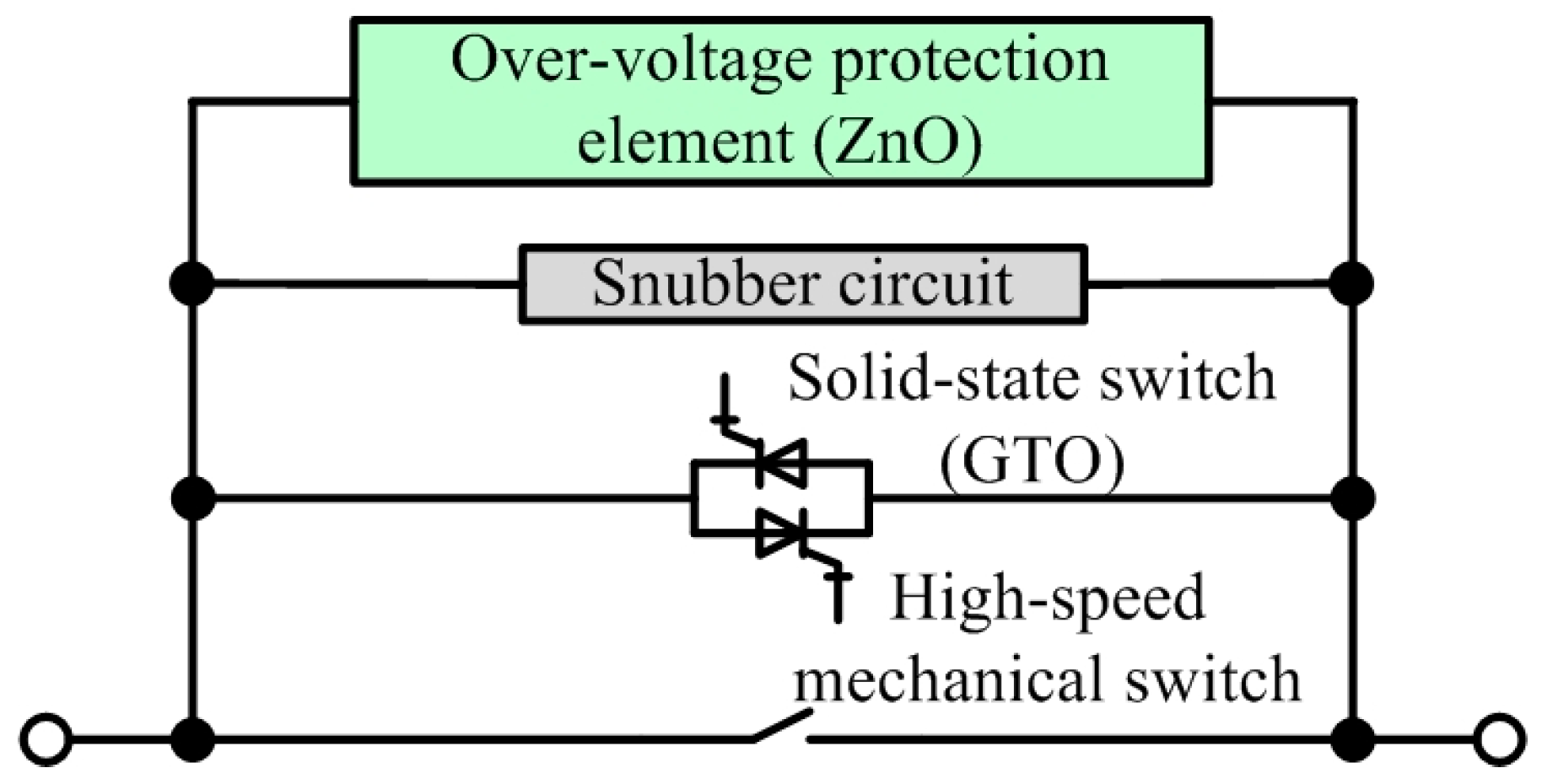
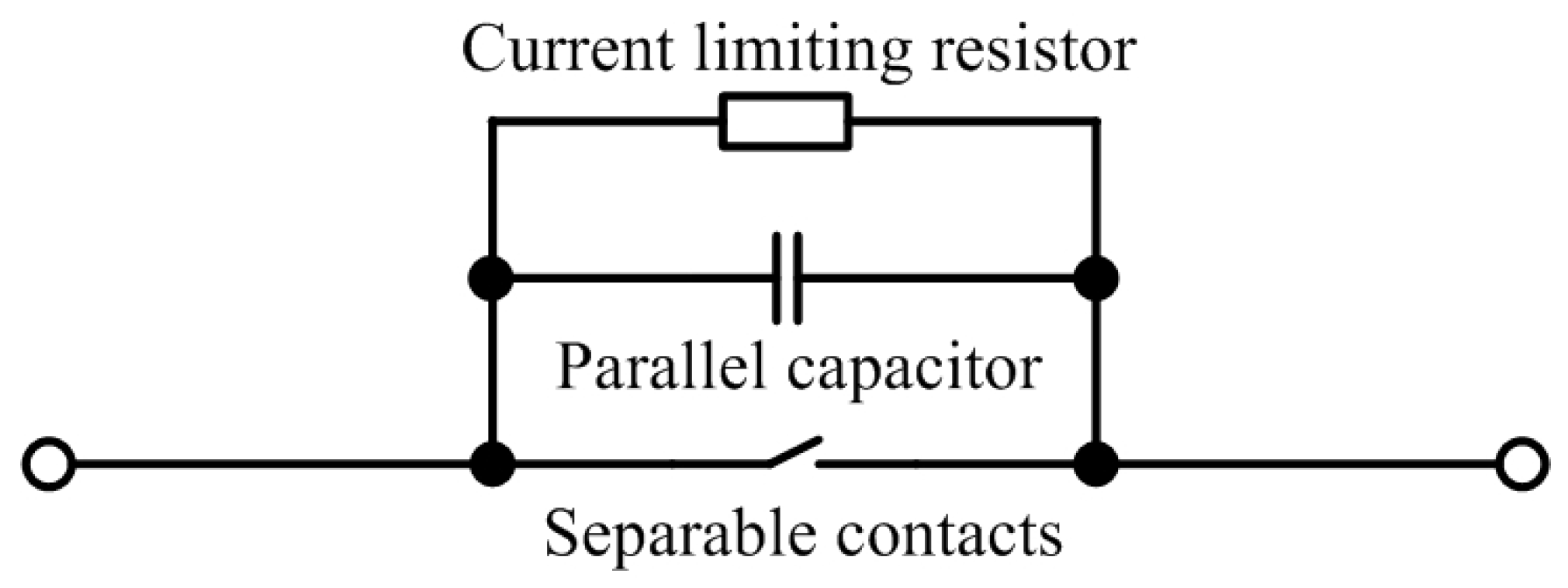
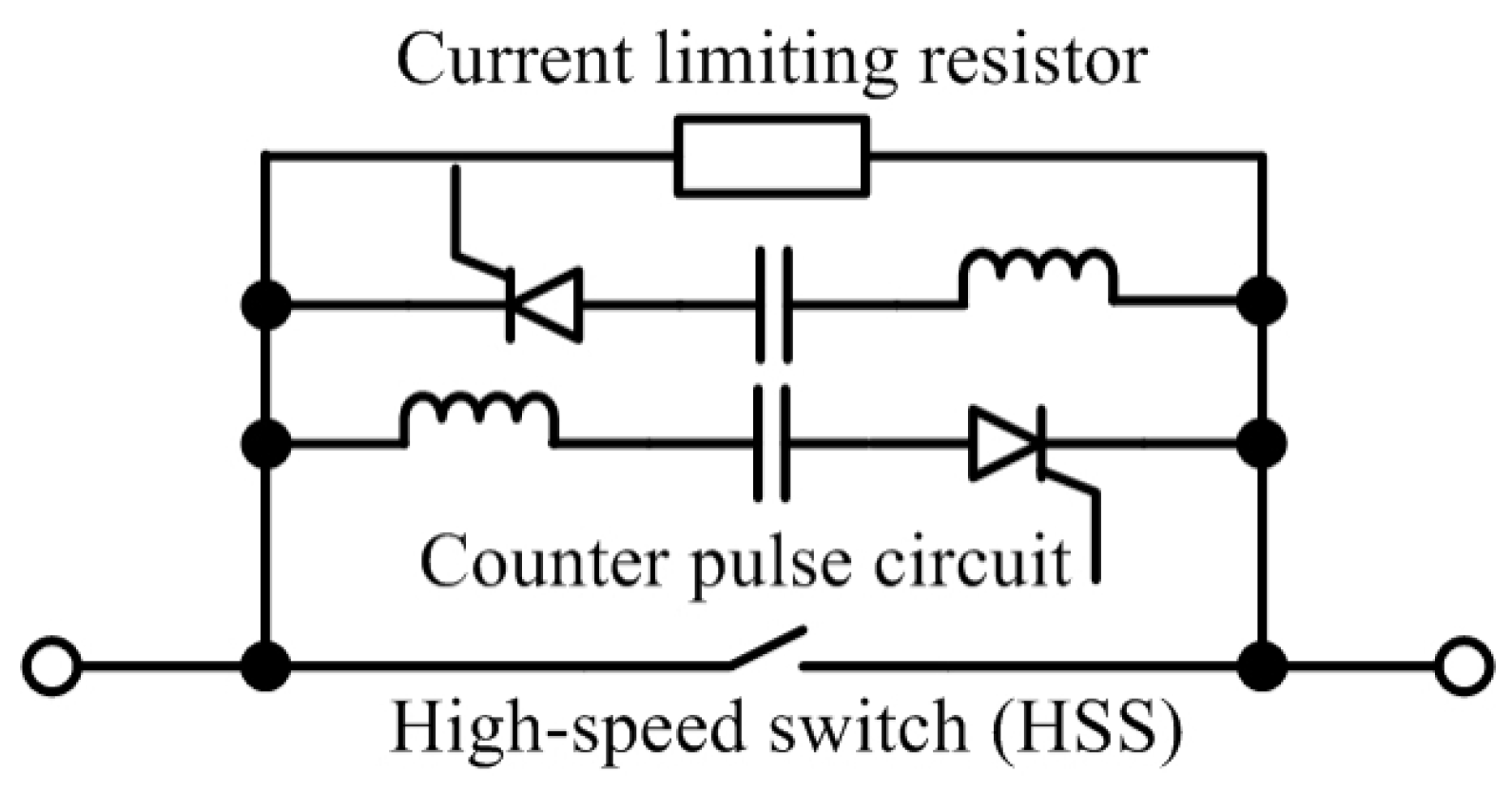
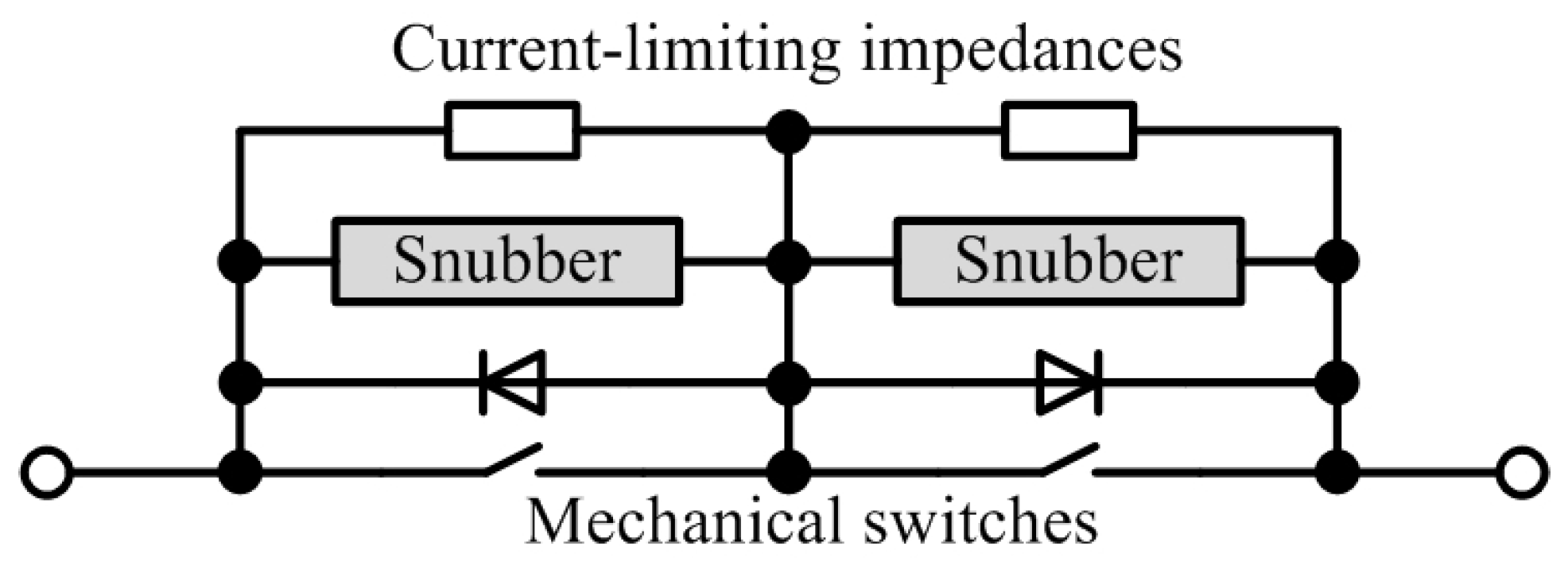
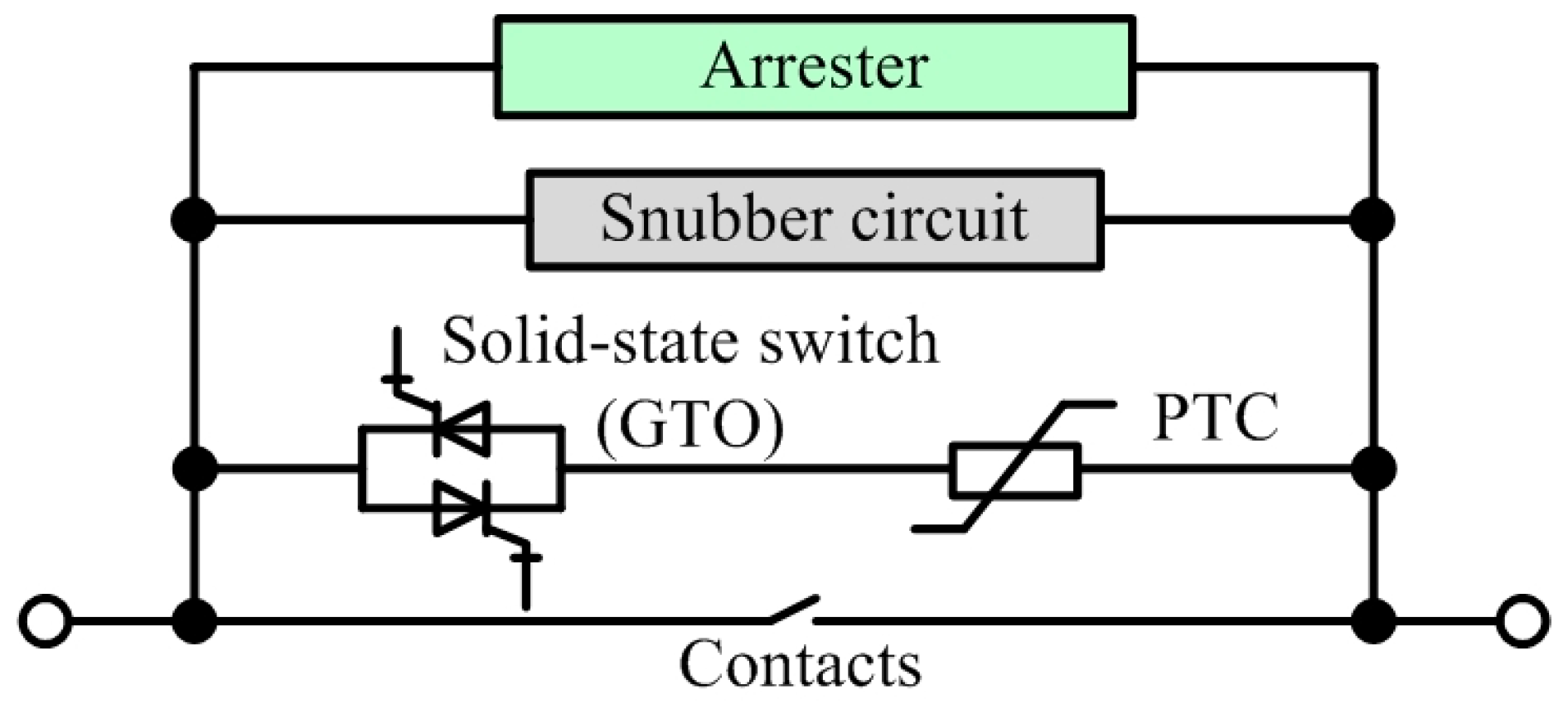
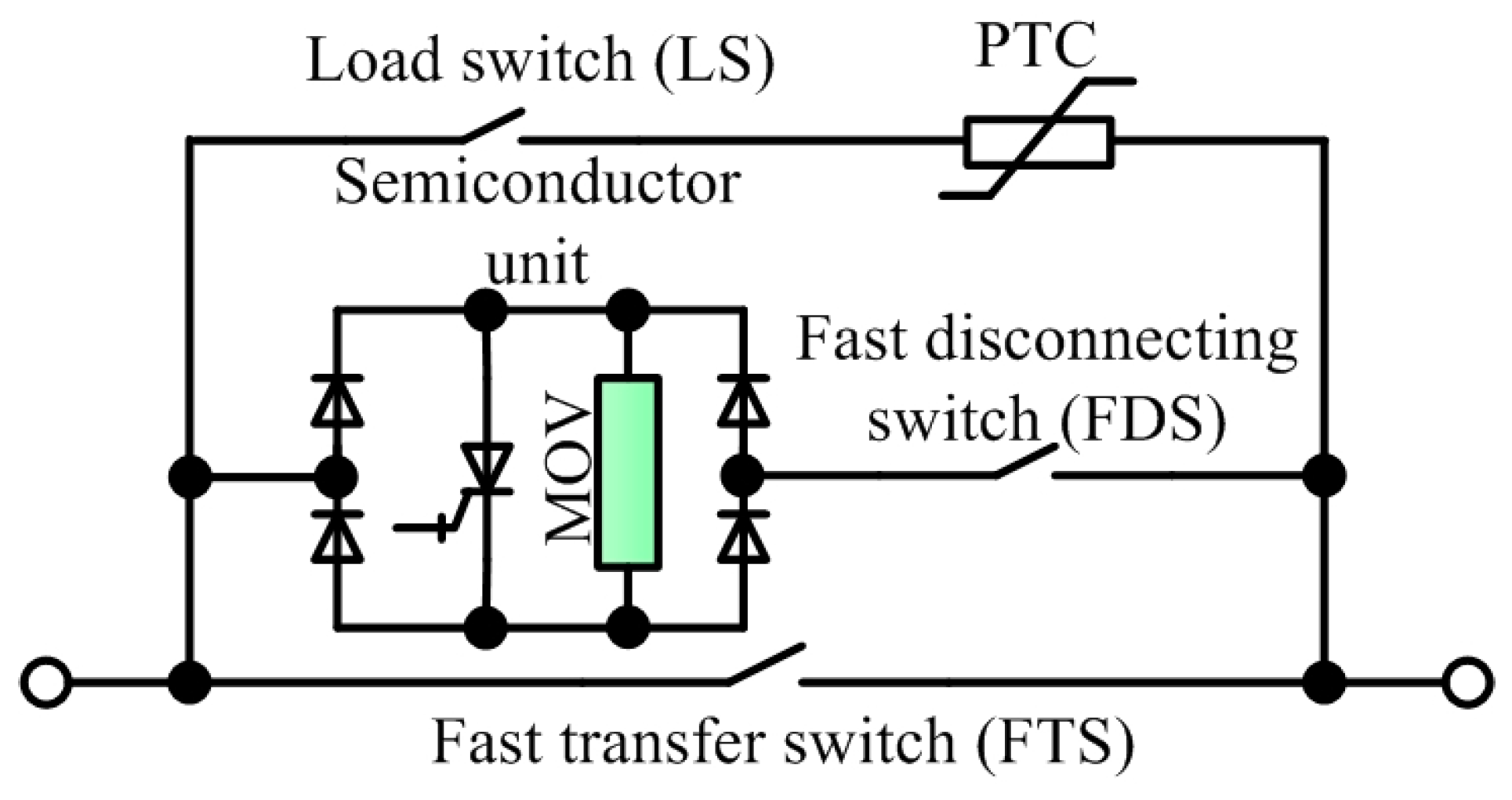

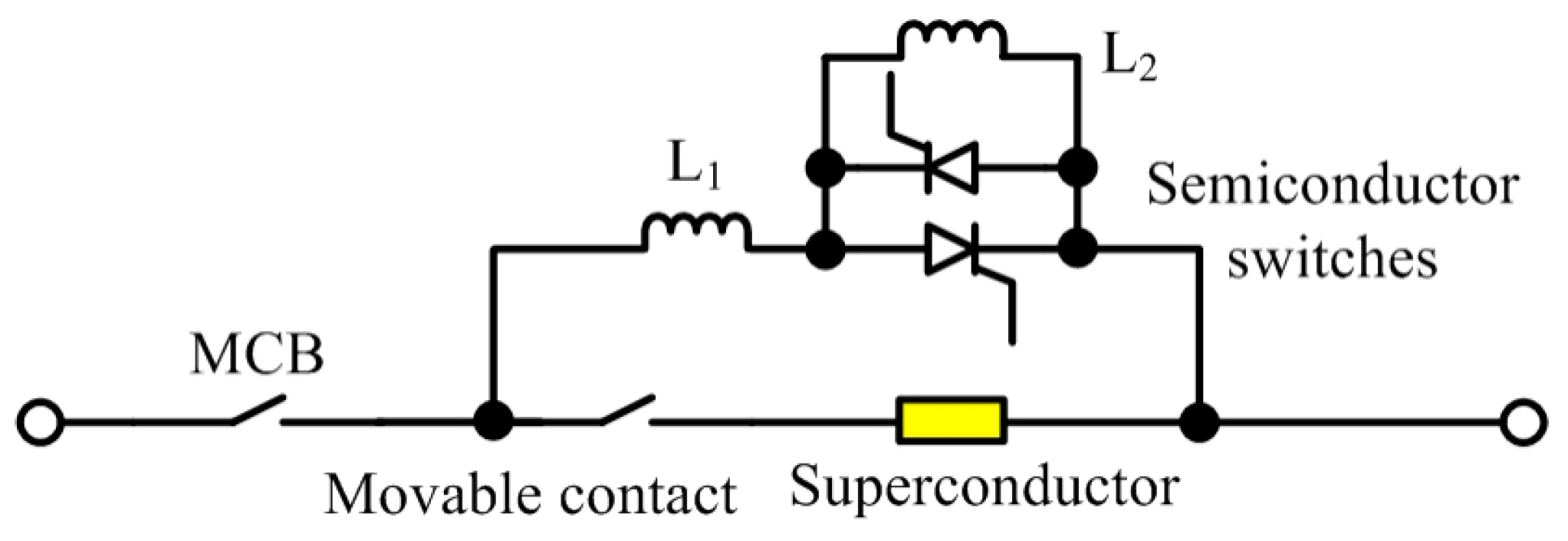


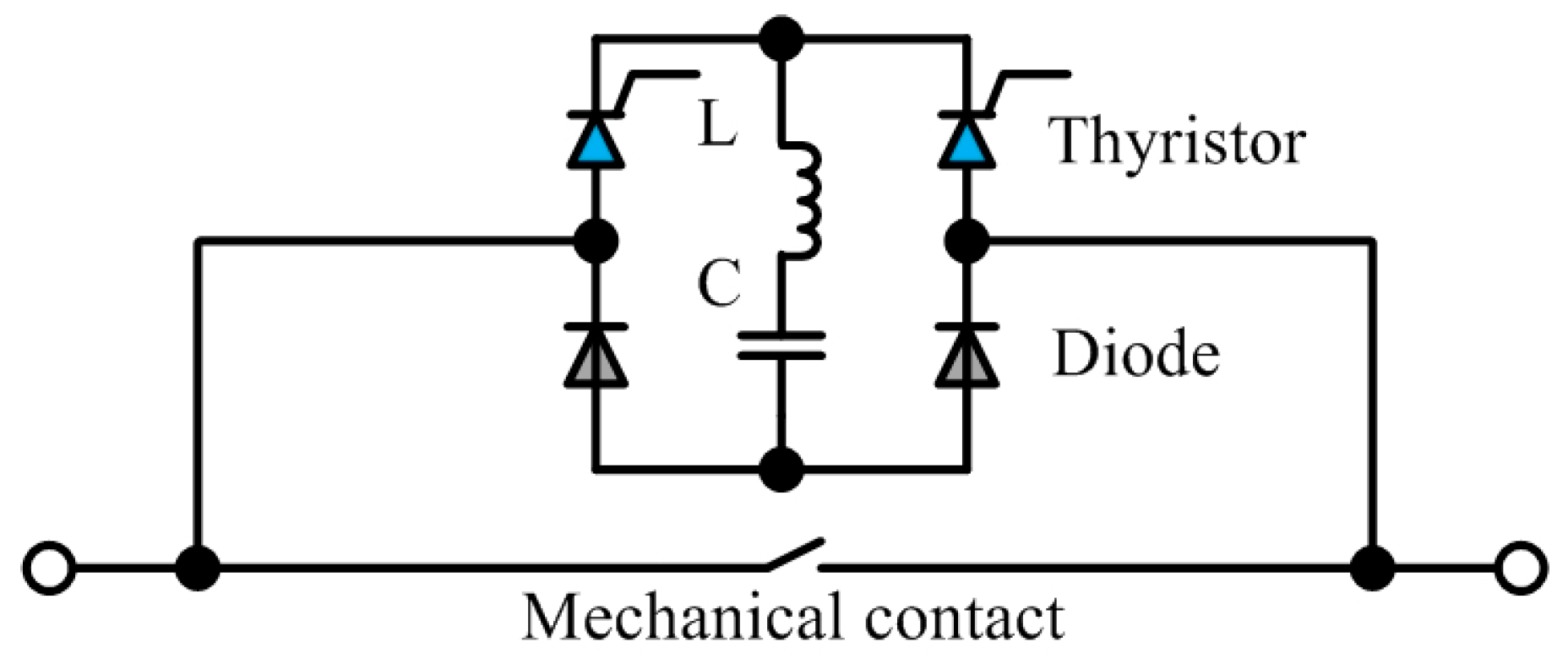
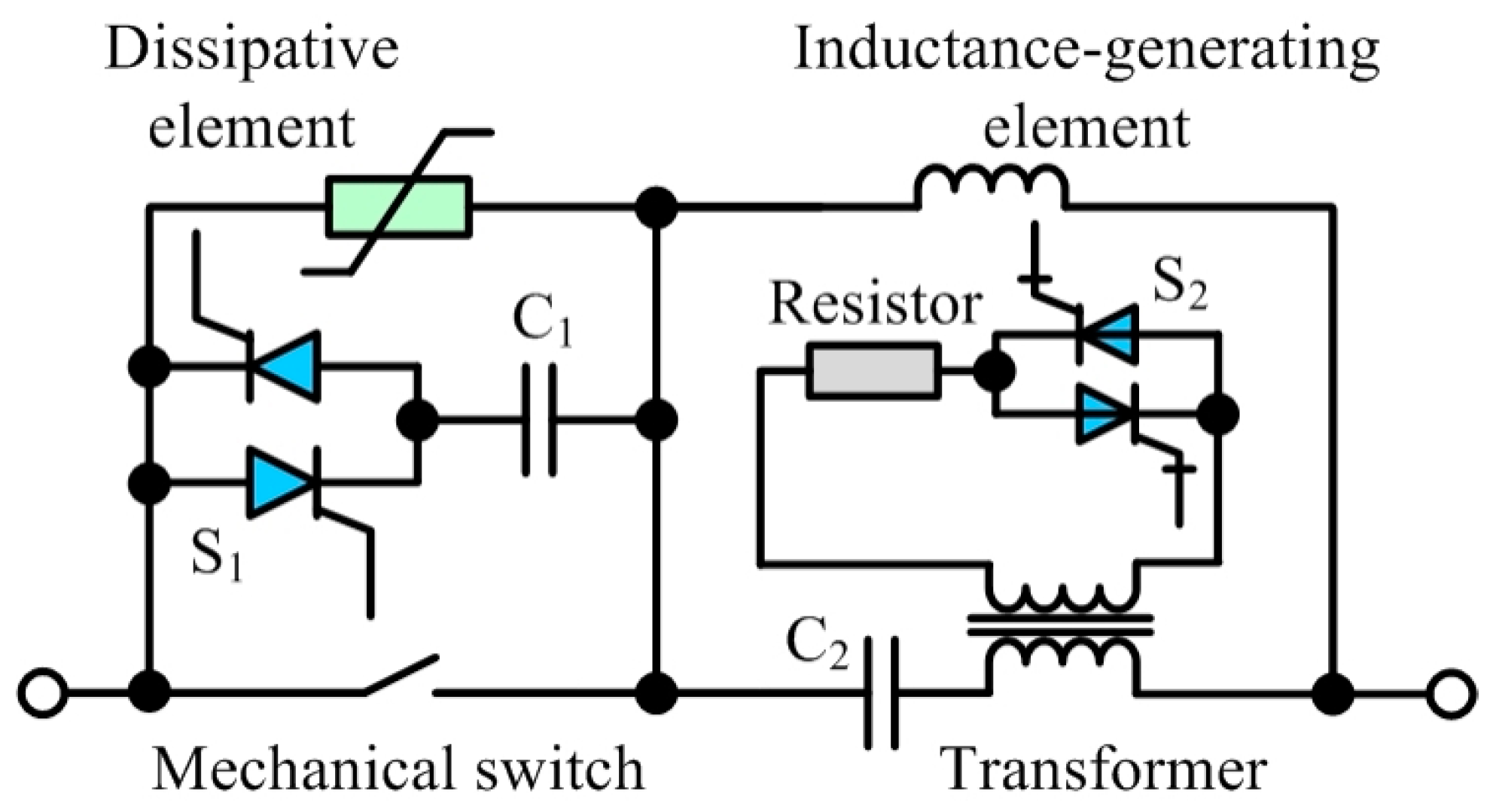
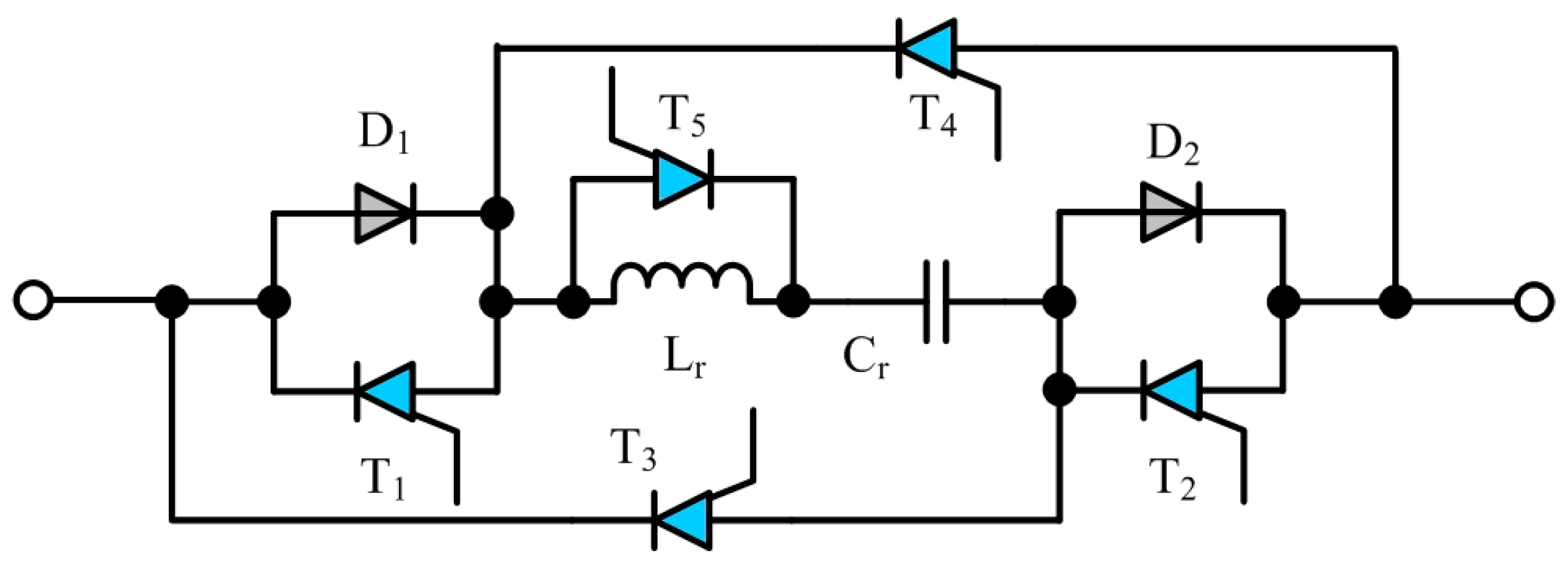

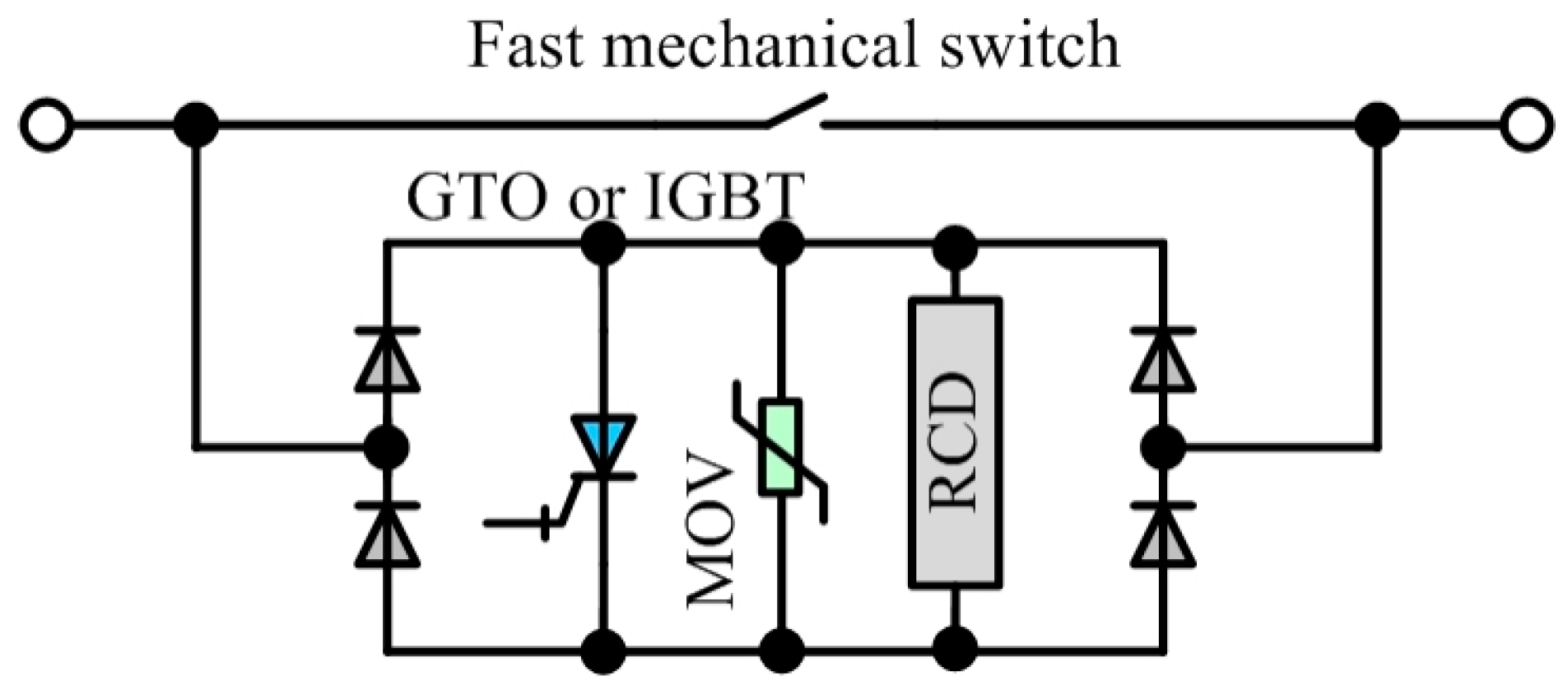
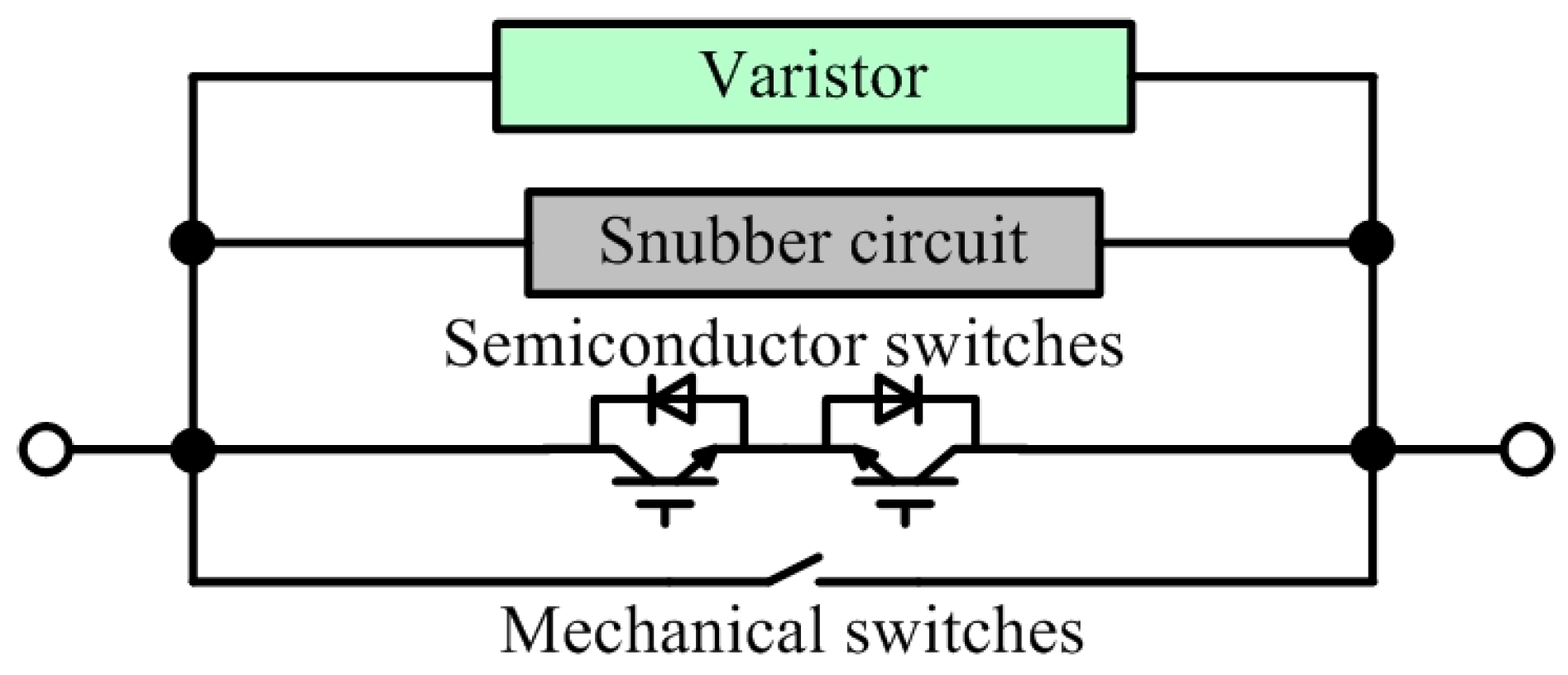
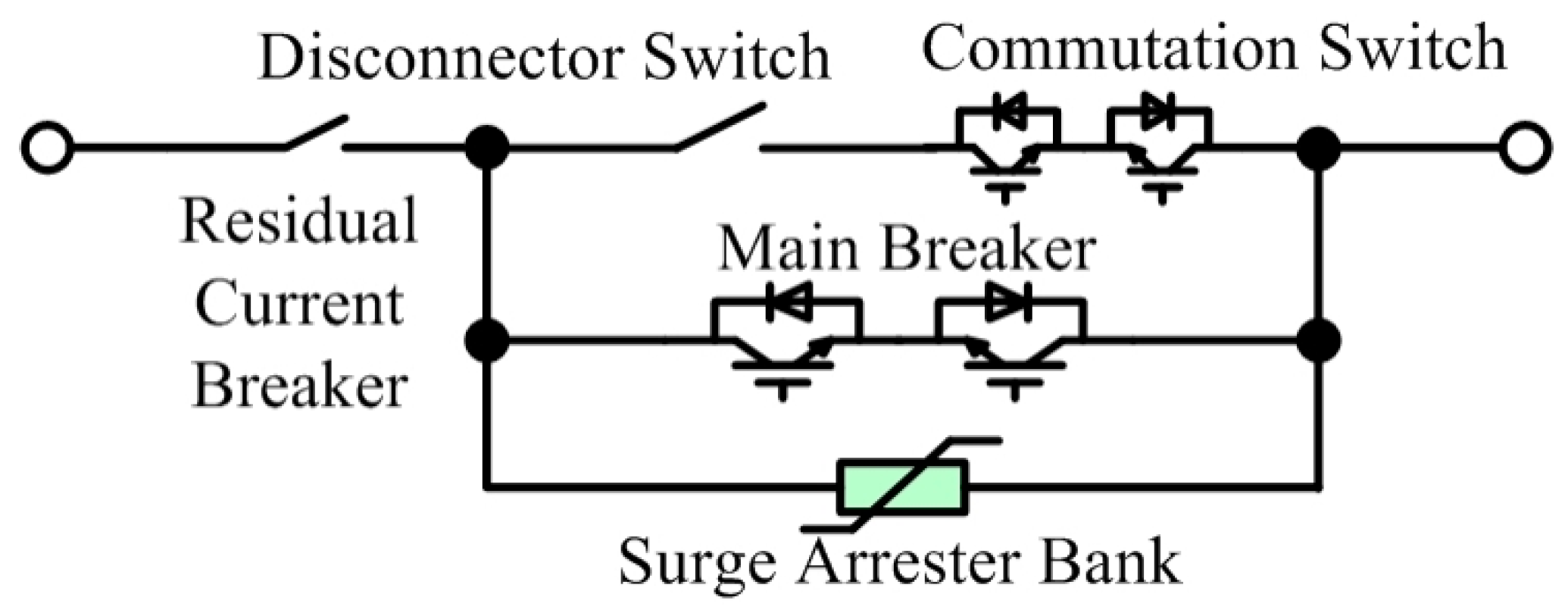
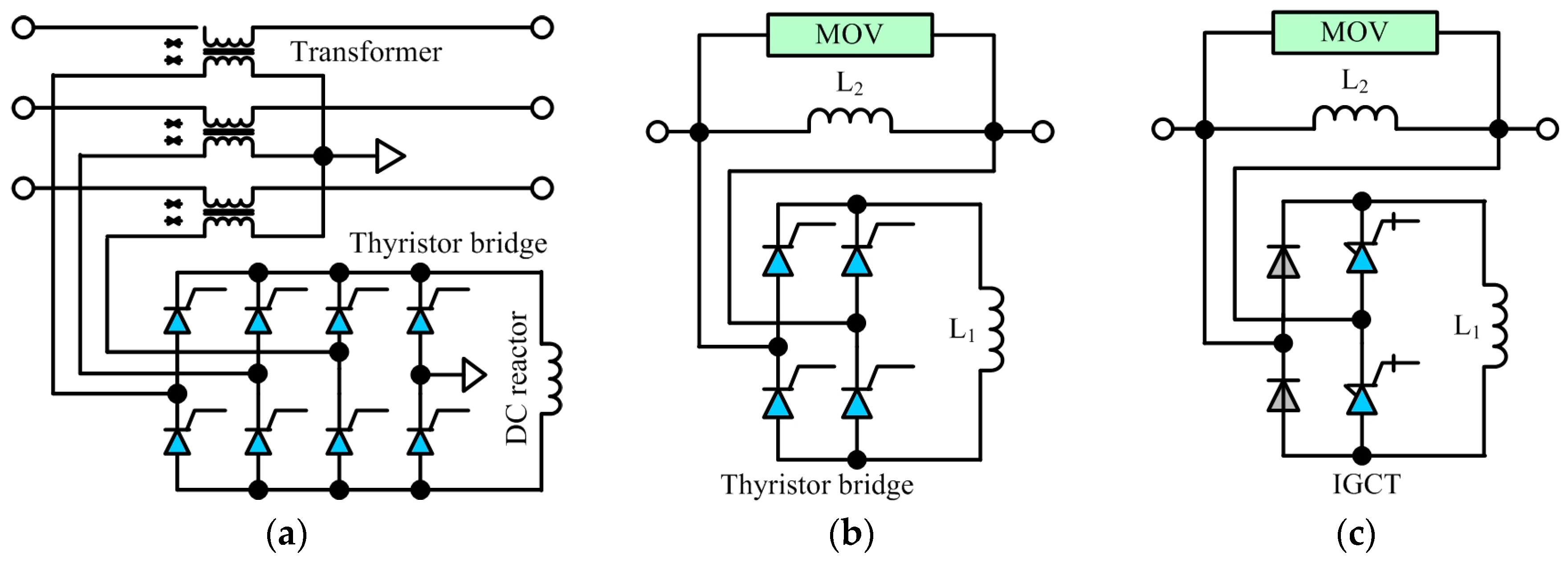

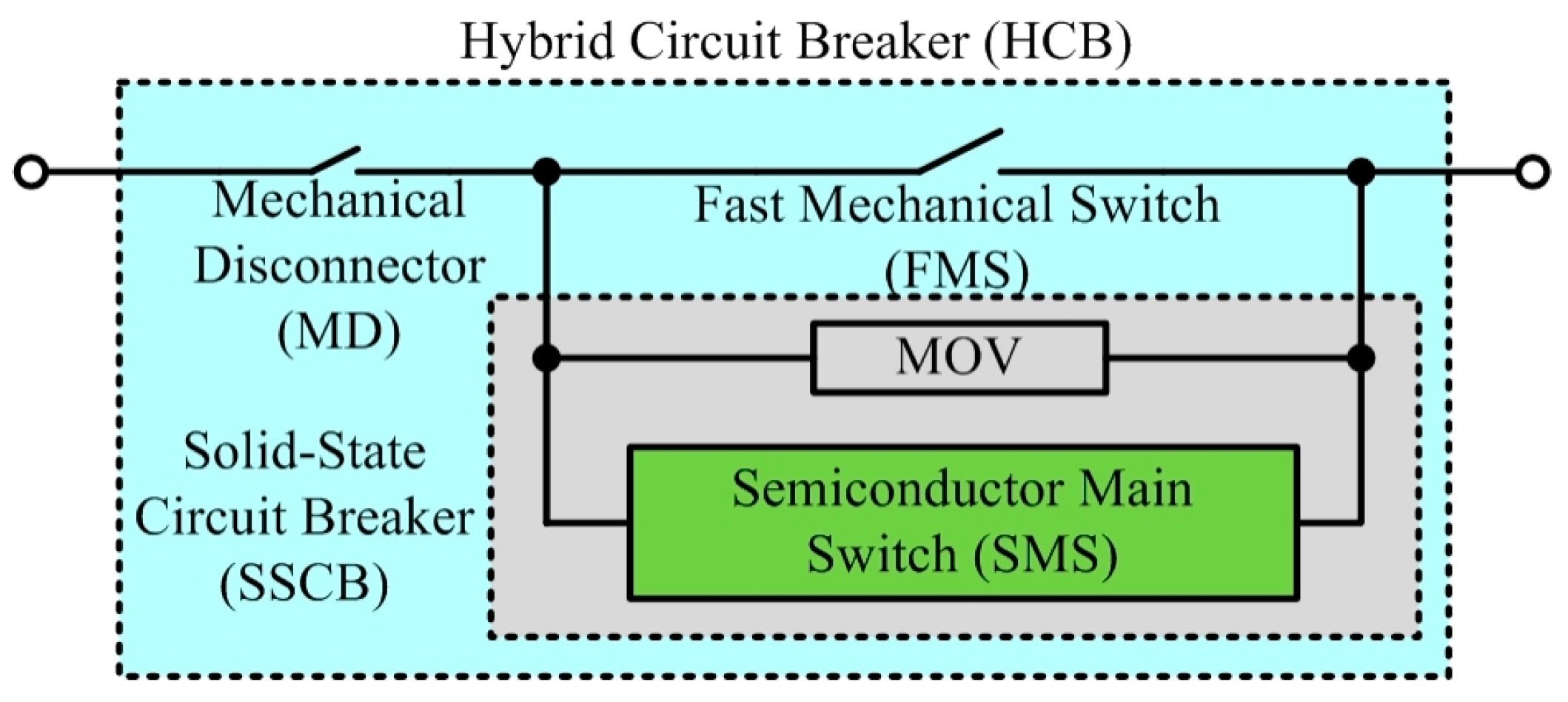
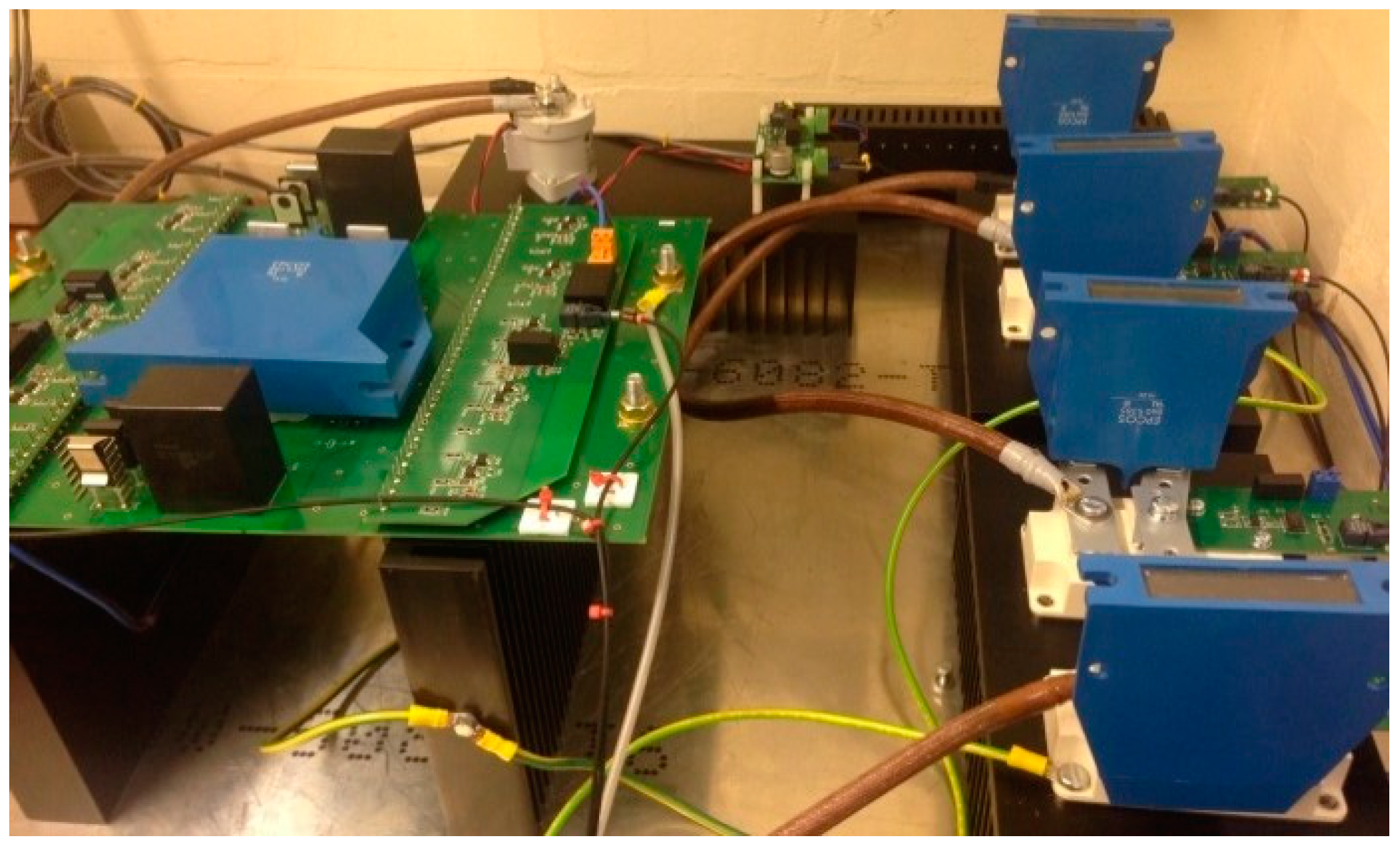
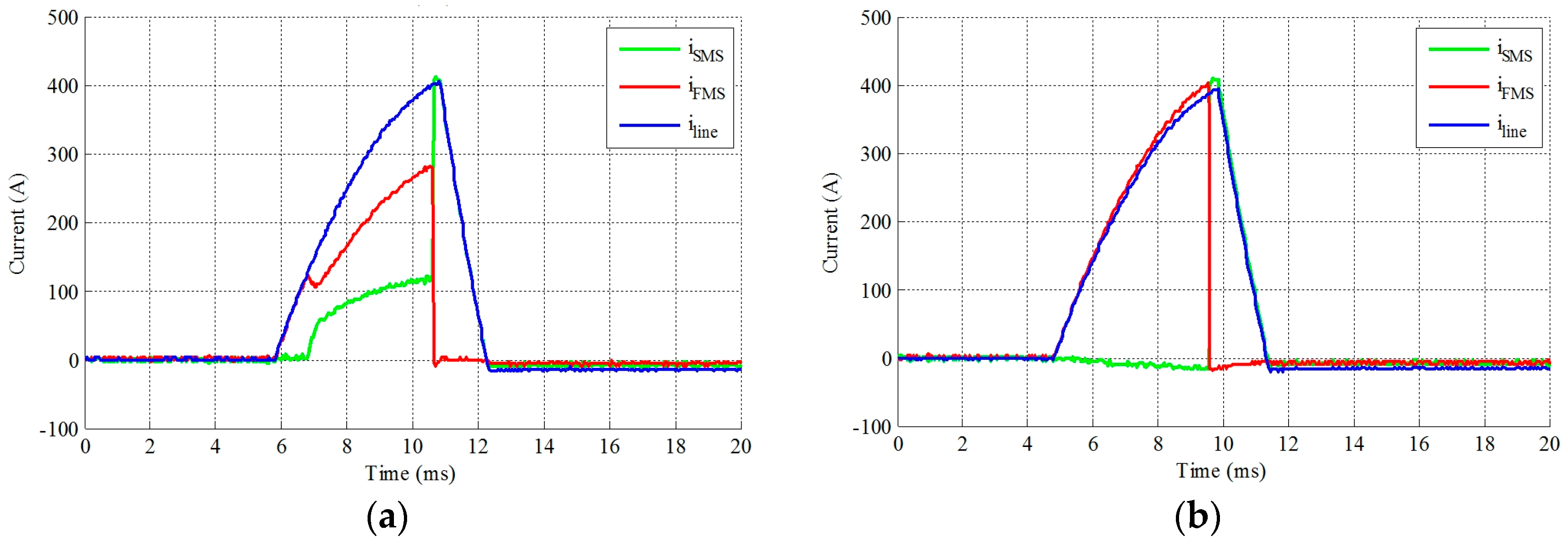
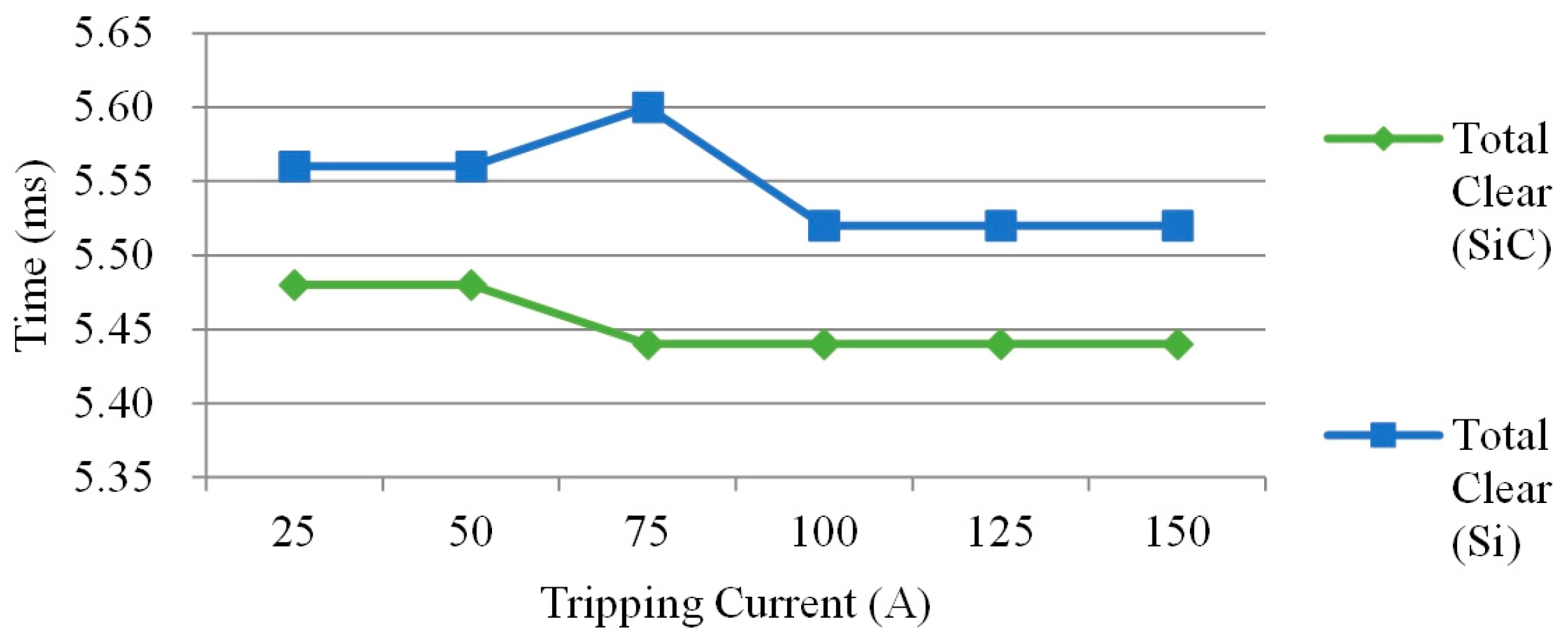
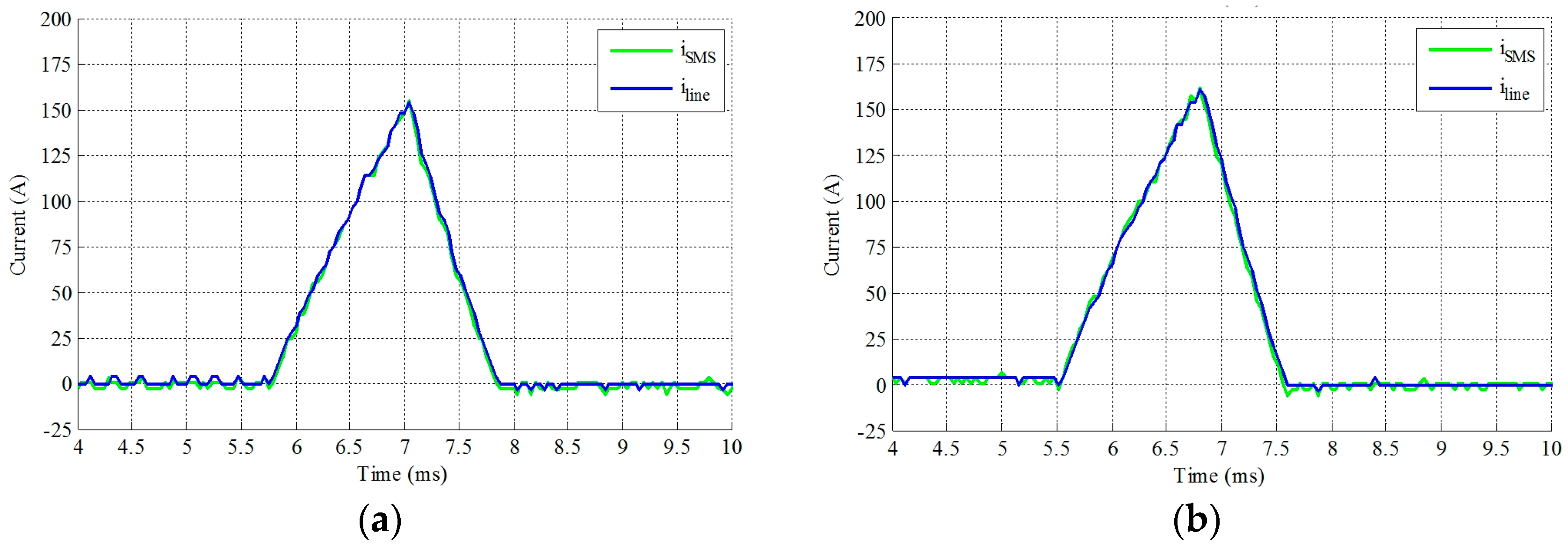
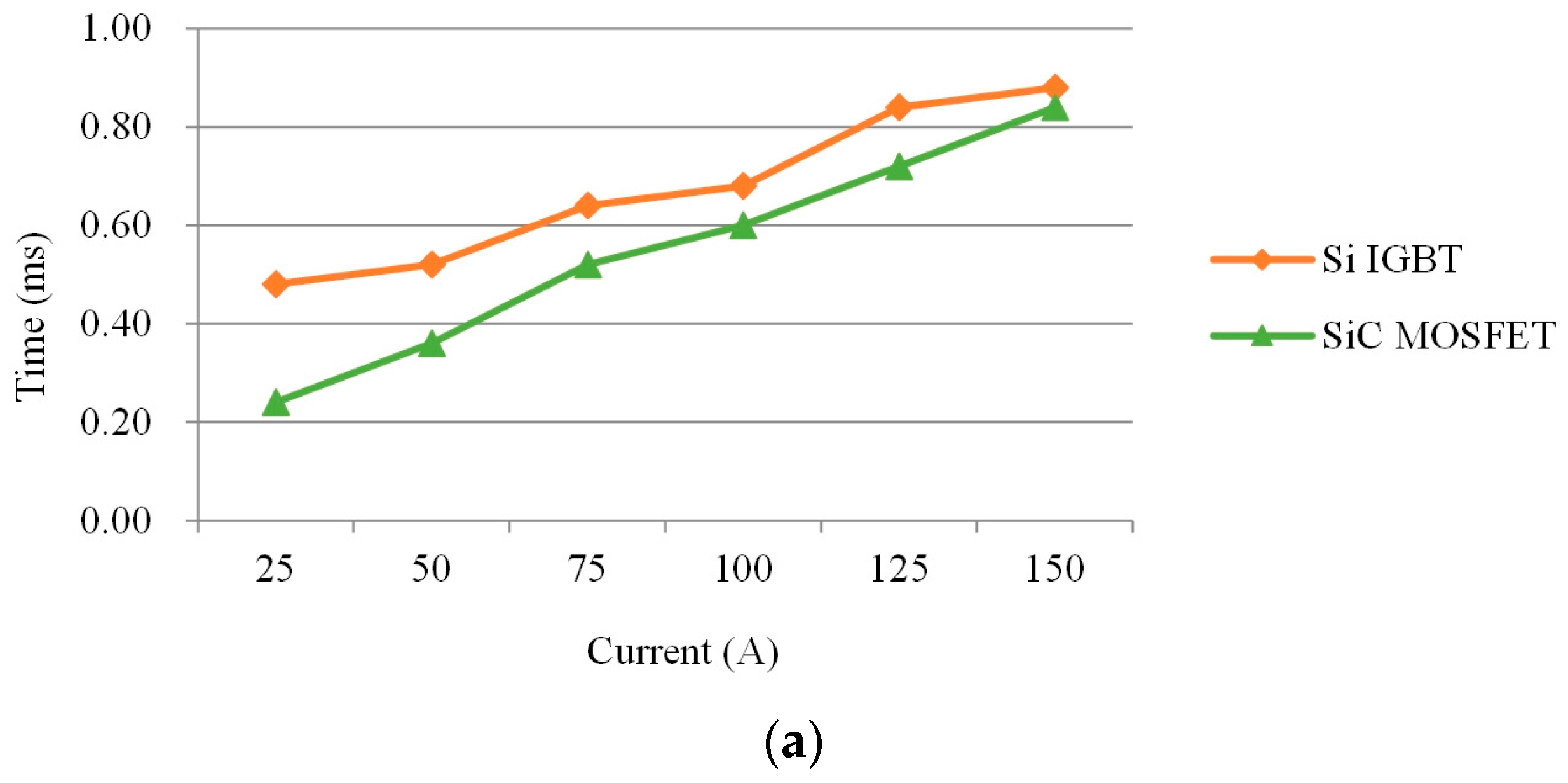
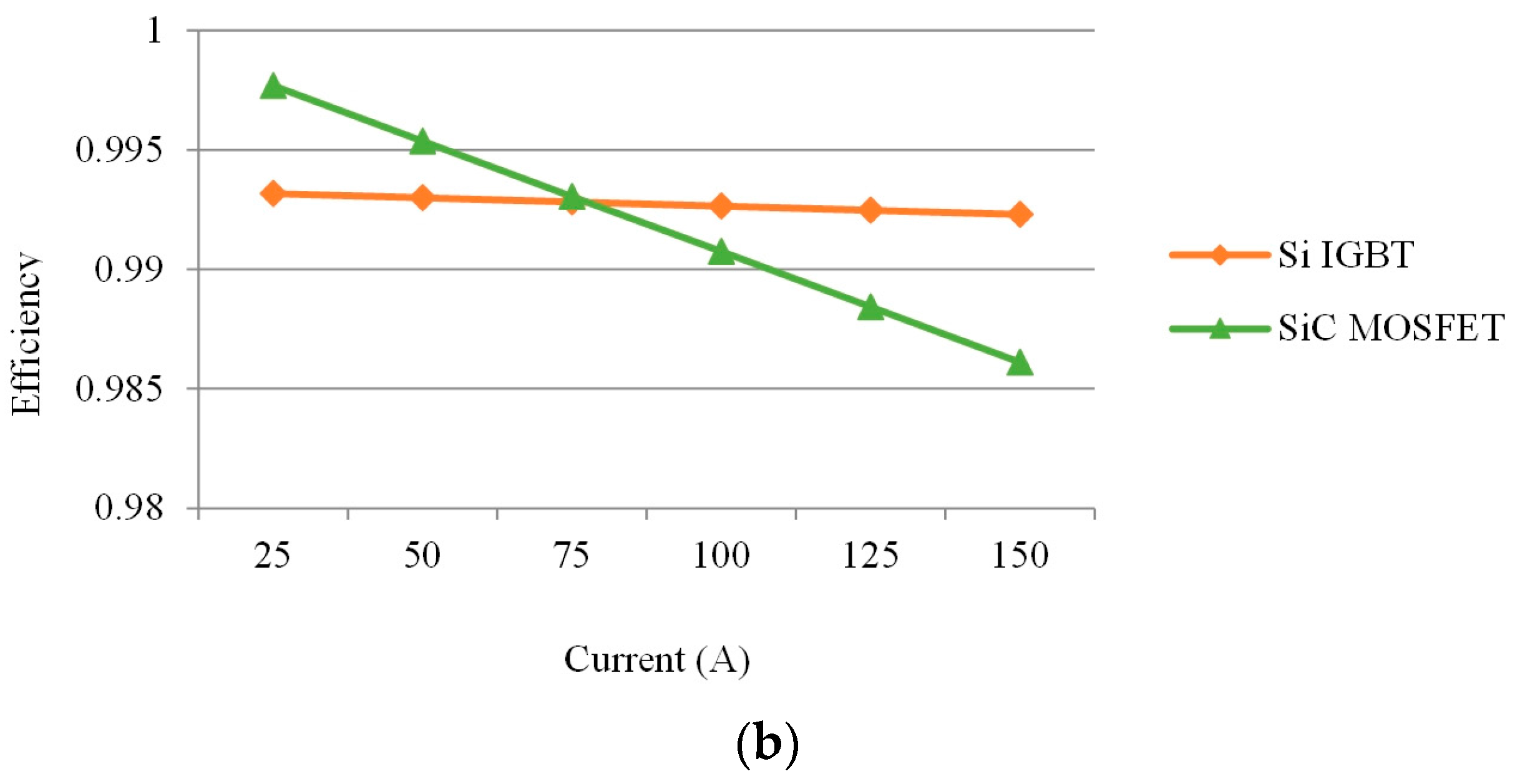
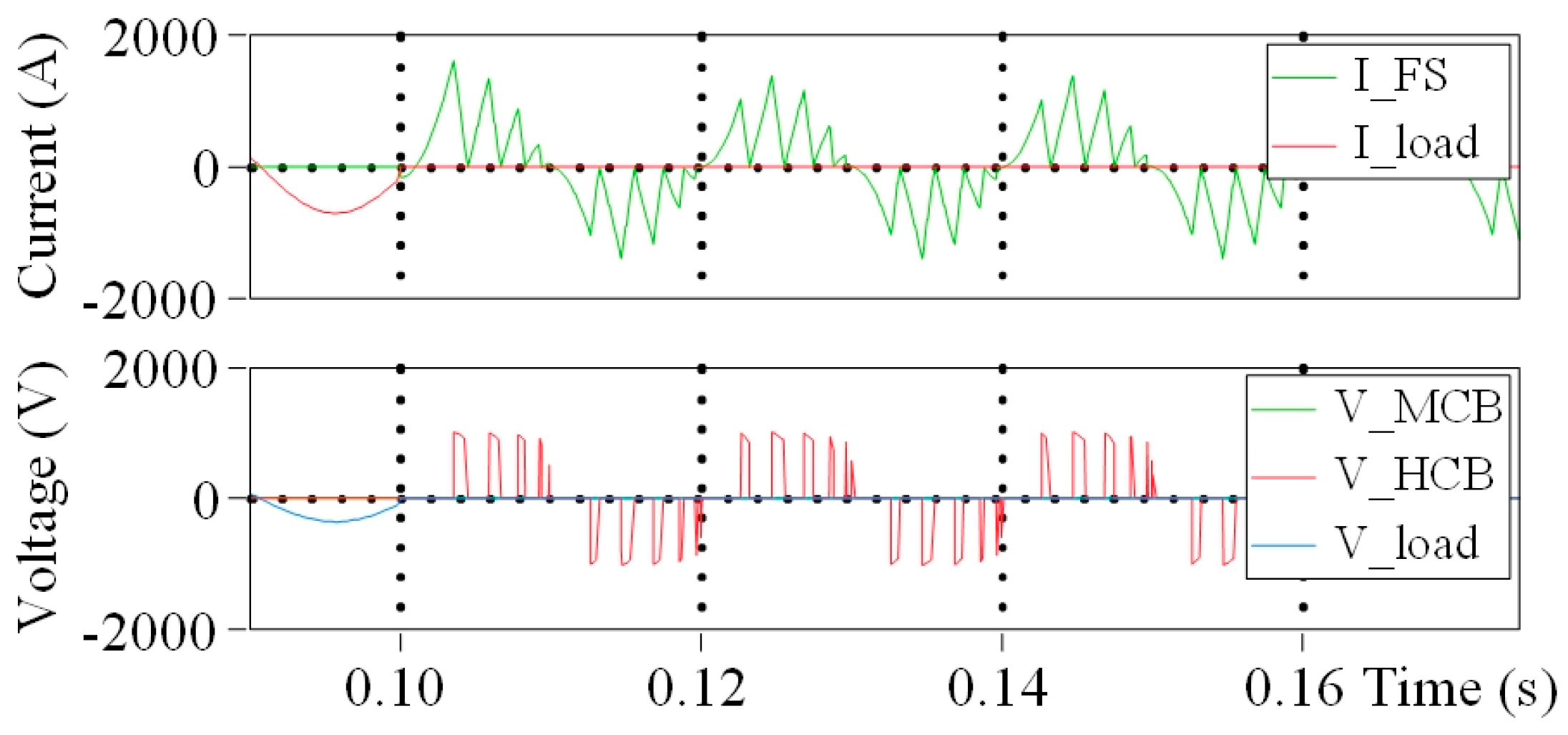
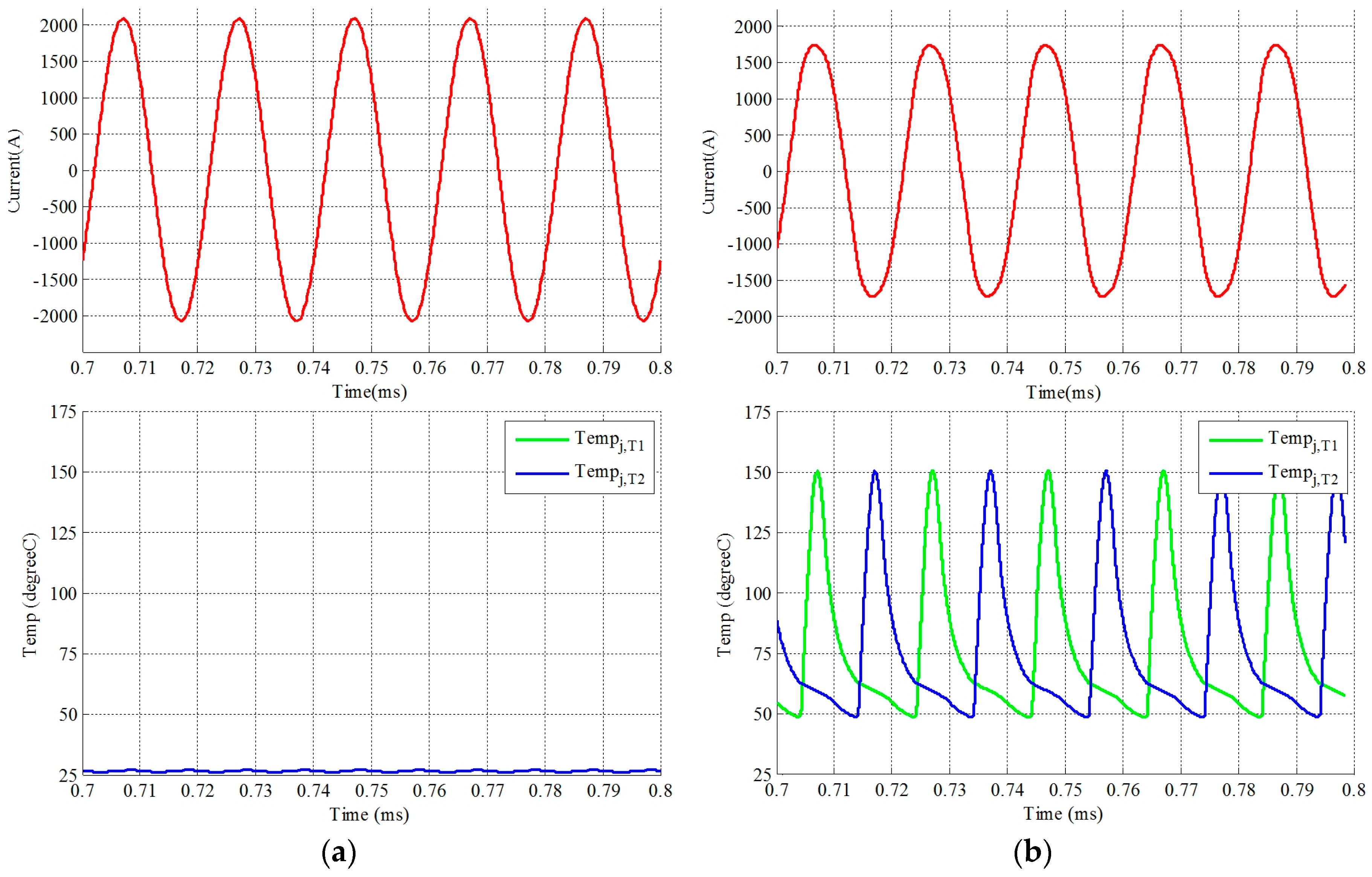
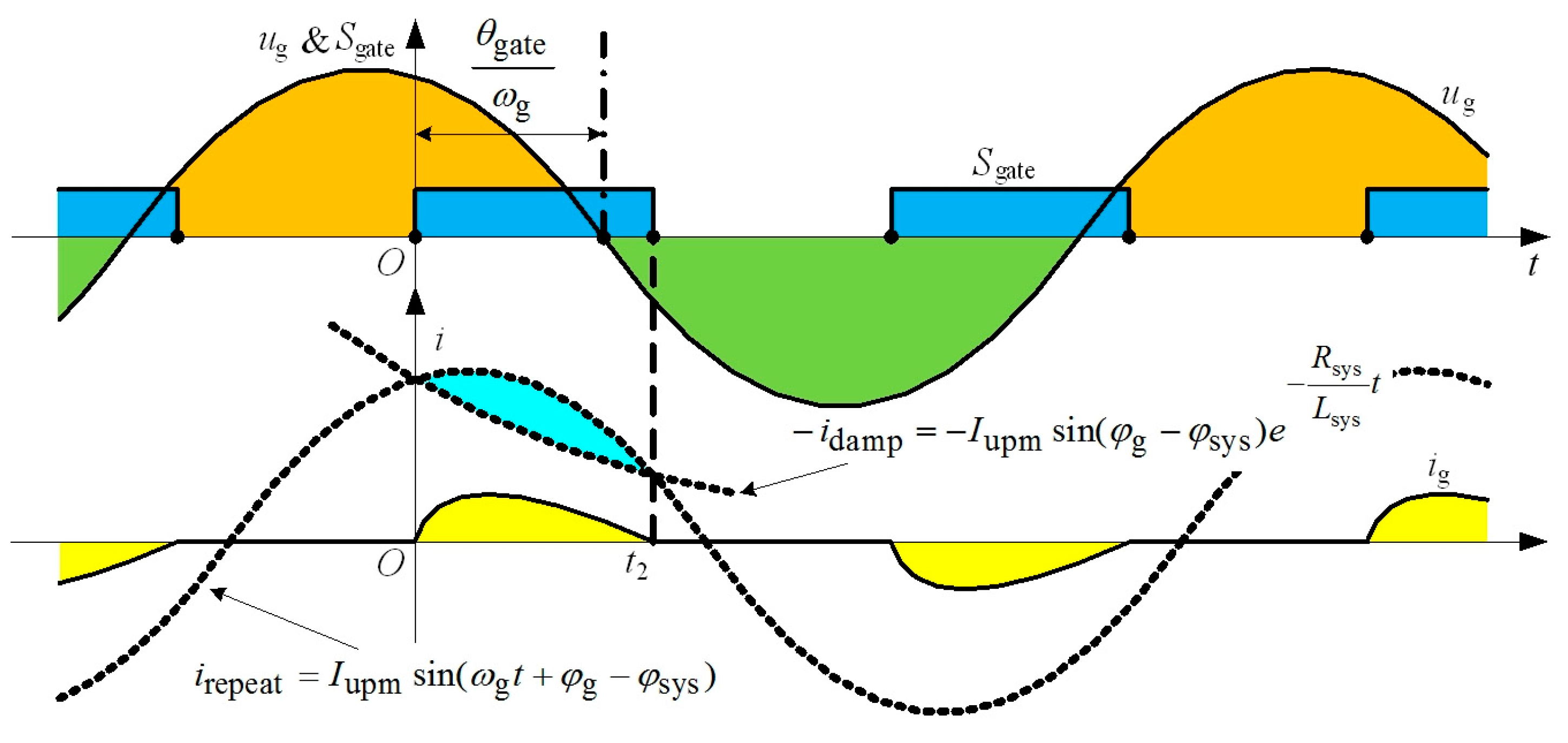
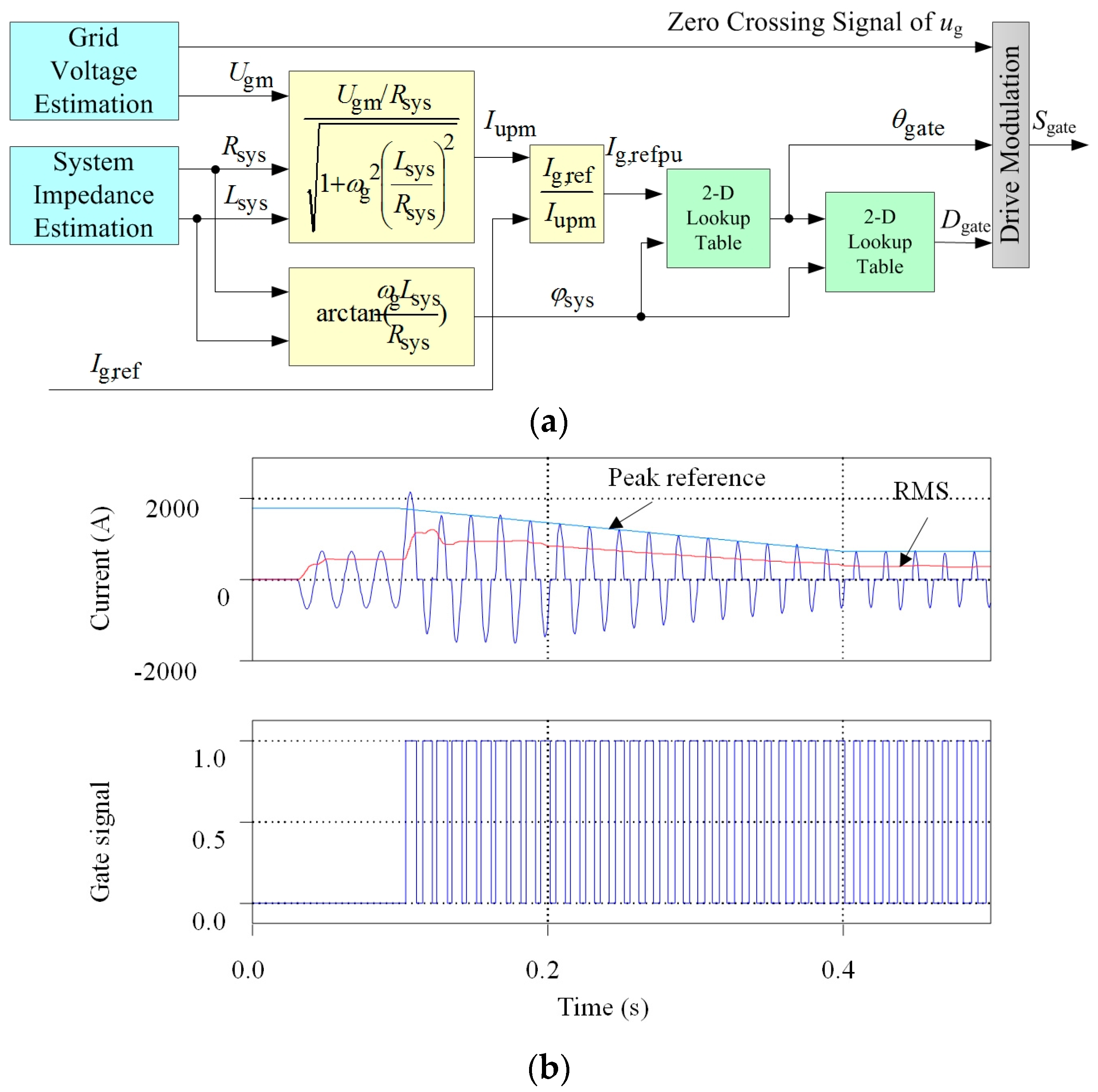


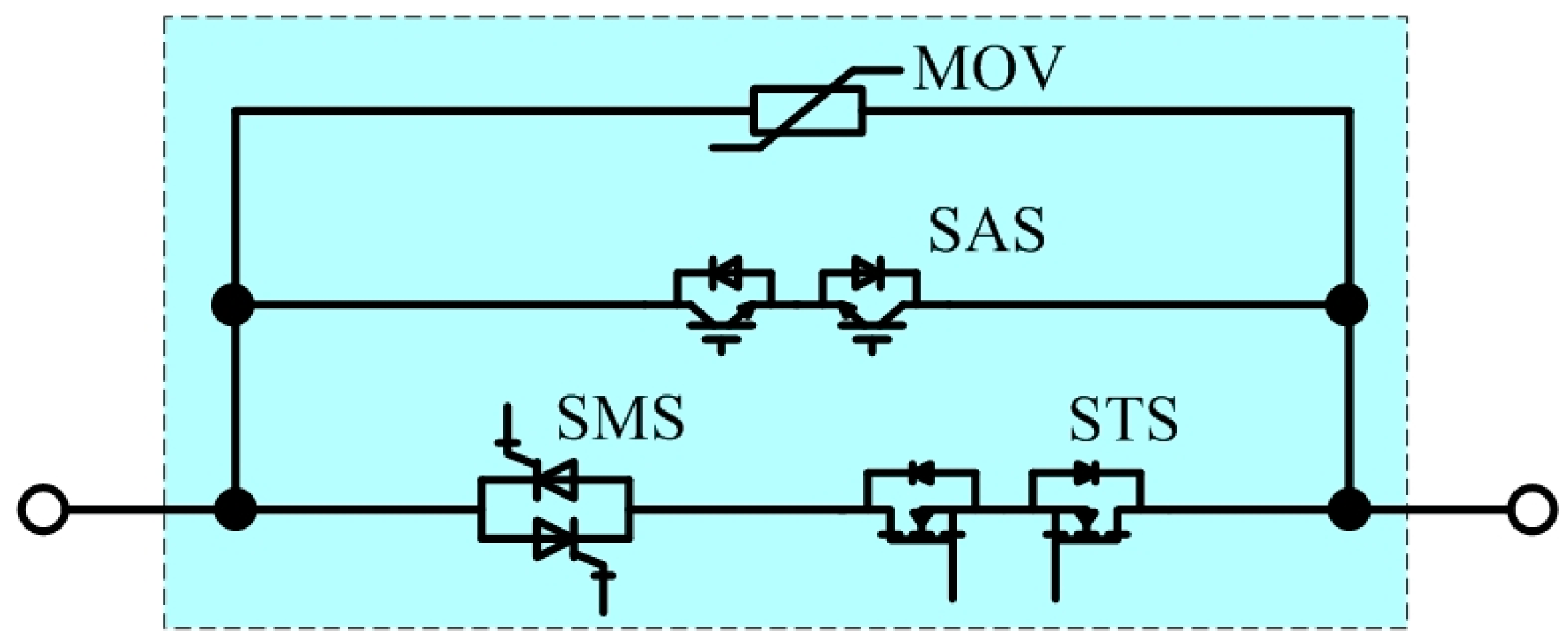
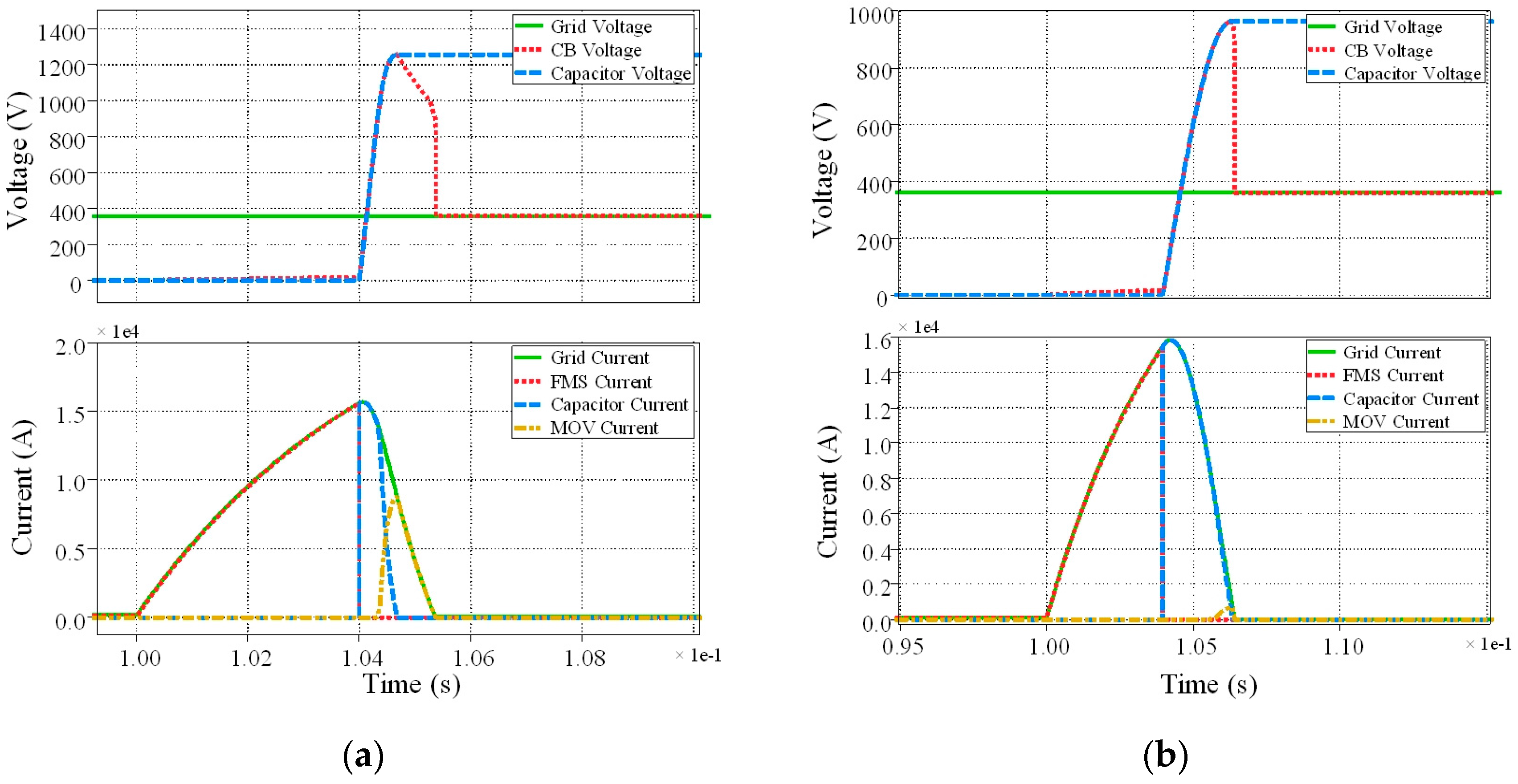

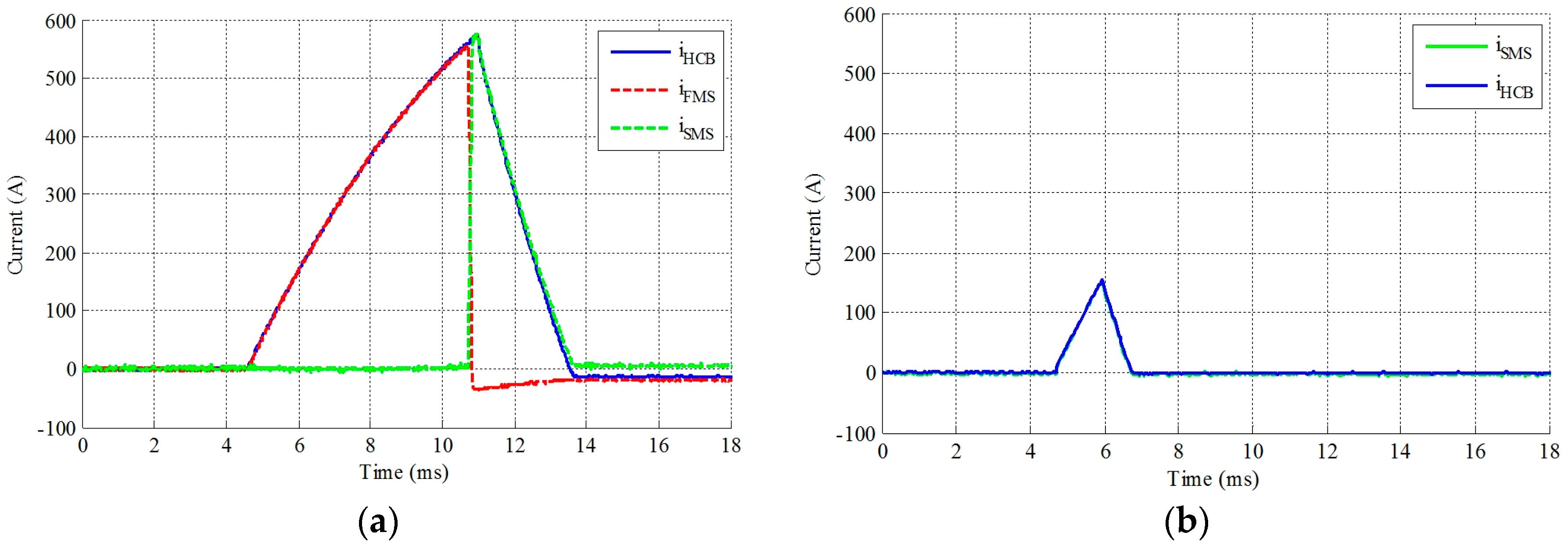
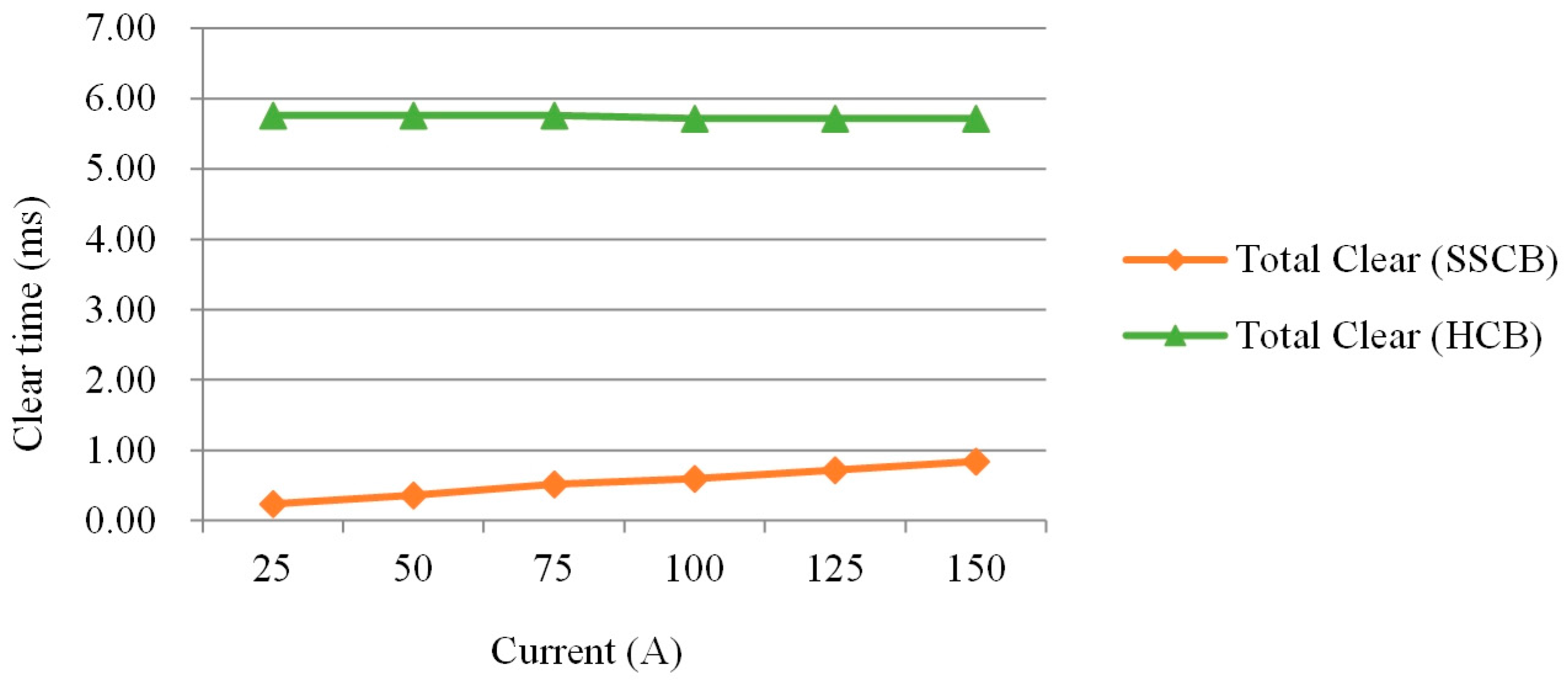
| Categories | Main Components | Advantages | Disadvantages | ||
|---|---|---|---|---|---|
| Fast breaking manner | One-time devices | Fuses [1,50] | Lowest size & cost | Poor maintenance, unclear melting time | |
| Reusable components | FMS [2,9,10,11,13,14,15,16,51,52] | Small size, low power loss | Electric arc with contact erosion, low speed | ||
| HCB/SSCB [12] | Fast, small arcing | Complex structure, relatively high cost | |||
| Current limiting manner | Switched passive components | Resistive elements | Switched resistor [17,18,19,20] | Low cost, constant resistive current | High power dissipation |
| Switched PTC resistors [2,21] | Auto-limiting | High power dissipation | |||
| Switched superconductor devices [8,22,23,24,25,26] | Auto-limiting with resistive current | High cost, huge size | |||
| With others | Switched inductor [26,29,30] | No extra heat, un-changeable current | Sensitive to changing of frequency | ||
| Switched L-C [17,31,32,33,34,35] | No extra heat, relatively low impedance for L-C | Sensitive to changing of frequency | |||
| Controlled passive & power devices | Semiconductor switches & energy absorbers | PWM control [36,38] | Simple structure, resistive current | High power dissipation of MOV | |
| Gate voltage control [37] | Simple structure, resistive current | High power dissipation of semiconductors | |||
| Other bridge concepts | Controlled bridge with inductor [40,41,42] | Controllable current, no additional heat | high current harmonics with thyristor | ||
| SSSC [47] | No additional heat, controllable current, low THD | Complex structure, capacitor charging issues | |||
| Type | Configuration 1 (HCB) | Configuration 2 (HCB) | Configuration 3 (SSCB) | |
|---|---|---|---|---|
| Power loss | Lowest | Low | Low with thyristor | |
| Total clear time | About 5.5 ms | About 6.5 ms | Less than 0.4 ms | |
| Peak current | About 15.7 kA | About 15.8 kA | About 1470 A | |
| Component features | FMS | Carry Icu for milliseconds and break | Carry Icu for milliseconds, no need to break | N/A |
| SMS | N/A | N/A | Carry 10 × In, no need to break | |
| SAS | Carry Icu for milliseconds | Carry Icu for milliseconds | Carry 10 × In for microseconds and break | |
| STS | N/A | Carry Icu for milliseconds and break | Carry 10 × In and break | |
| Capacitor | Large film capacitor | Large film capacitor | N/A | |
| Advantages | Lowest on-state loss | Low on-state loss No arc for FMS | Ultra-fast switching Acceptable on-state loss | |
| Disadvantages | Large film capacitor Large MOV arrestor | Larger film capacitor Higher turn-off time | Complex structure | |
| Semiconductor Type | Thyristor | GTO | MCT | IGBT | Si MOSFET | SiC MOSFET/BJT/JFET | |
|---|---|---|---|---|---|---|---|
| Example part number | VS-ST1200C12K0P | DGT304RE | SMCTTA65N14A10 | NGTB40N120SWG | AUIRFSA8409-7P | C2M0040120D | |
| Rated voltage | 1200 V | 1300 V | 1400 V | 1200 V | 40 V | 1200 V | |
| Rated current | 1100 A | 390 A | 65 A | 40 A | 370 A | 40 A | |
| Pulsed current | 25.7 kA | 4 kA | 6 kA | 200 A | 1440 A | 160 A | |
| Reverse blocking | Yes | Yes | No | No | No | No | |
| Loss parameters | 1.3 V | 2.0 V | 1.2 V | 2.4 V | 0.5 mΩ | 40 mΩ | |
| Basic SSCB | SMS | × | √ | × | √ | × | √ |
| Configuration 1 | SAS | √ | √ | × | × | × | × |
| Configuration 2 | STS | × | × | × | × | √ | × |
| SAS | √ | √ | × | × | × | × | |
| Configuration 3 | SMS | √ | √ | √ | × | × | × |
| STS | × | × | × | × | √ | × | |
| SAS | × | √ | × | √ | × | × | |
© 2017 by the authors. Licensee MDPI, Basel, Switzerland. This article is an open access article distributed under the terms and conditions of the Creative Commons Attribution (CC BY) license (http://creativecommons.org/licenses/by/4.0/).
Share and Cite
Gu, C.; Wheeler, P.; Castellazzi, A.; Watson, A.J.; Effah, F. Semiconductor Devices in Solid-State/Hybrid Circuit Breakers: Current Status and Future Trends. Energies 2017, 10, 495. https://doi.org/10.3390/en10040495
Gu C, Wheeler P, Castellazzi A, Watson AJ, Effah F. Semiconductor Devices in Solid-State/Hybrid Circuit Breakers: Current Status and Future Trends. Energies. 2017; 10(4):495. https://doi.org/10.3390/en10040495
Chicago/Turabian StyleGu, Chunyang, Pat Wheeler, Alberto Castellazzi, Alan J. Watson, and Francis Effah. 2017. "Semiconductor Devices in Solid-State/Hybrid Circuit Breakers: Current Status and Future Trends" Energies 10, no. 4: 495. https://doi.org/10.3390/en10040495







